To point out that the world is full of wonders is hardly a revelation, whether you’re talking about ancient or modern marvels, feats of architecture and engineering, or geologic and natural wonders that take your breath away with their beauty. So that’s why it’s surprising that so many lists limit their wonders of the natural world to the single digits. That’s why we’ve compiled this list of natural wonders, incorporating places nominated on other top lists as well as places our editorial team thinks are the most beautiful and impressive on the planet.
From African deserts to European volcanoes to rare phenomena occurring across the globe, here are 39 of the planet’s most spectacular natural wonders of the world.
The new seven natural wonders of the world
Back in 2000, the New7Wonders Foundation decided to reboot the seven wonders of the world concept so that the places on the list were actually still standing, organizing a global poll to determine what the new wonders would be. In light of the campaign’s success, the foundation decided to tally another set of votes, which totaled over 500 million, to name the new Seven Wonders of Nature. Here’s the final list:
The Amazon River
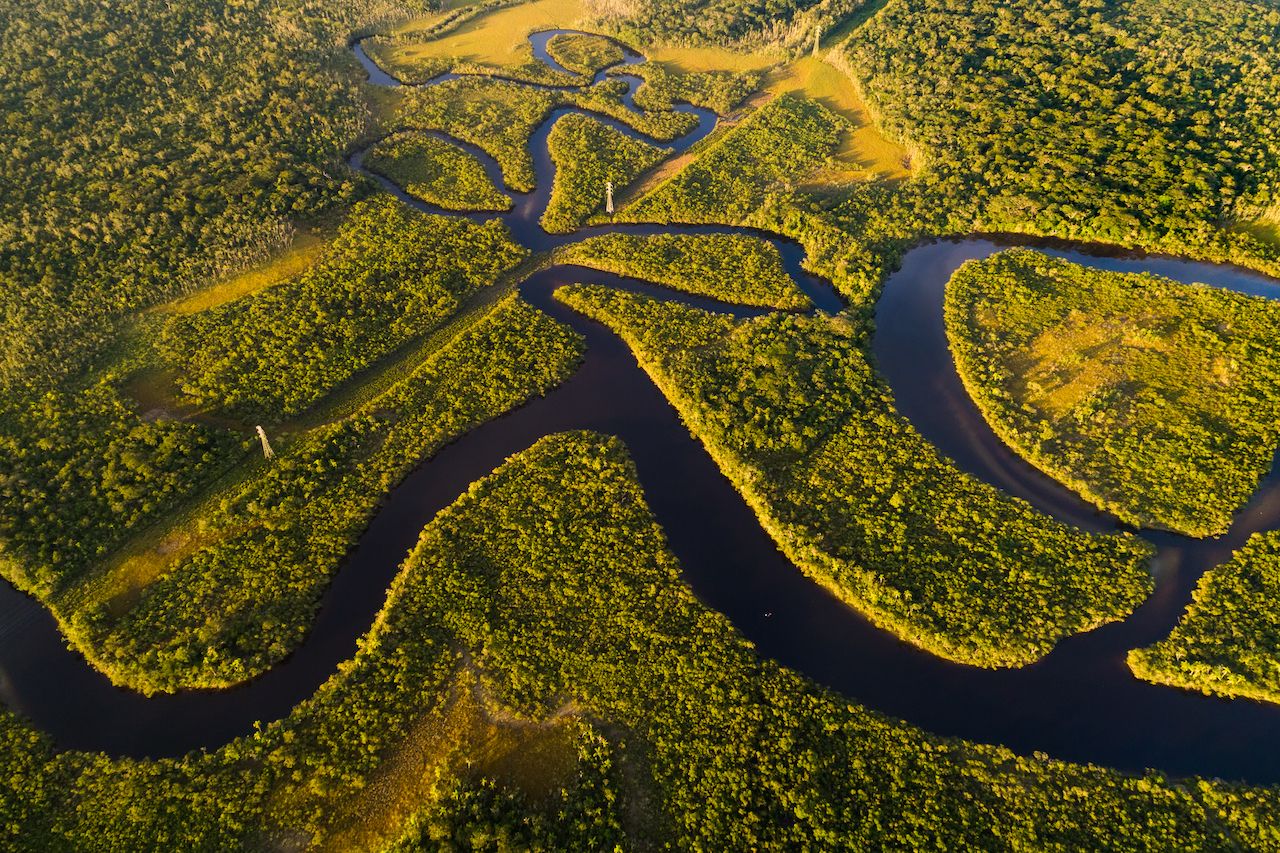
Photo: Gustavo Frazao/Shutterstock
One of the most impressive water bodies on Earth, the Amazon is the longest river in South America at over 4,000 miles and has the largest drainage system on the planet, discharging roughly 7,4000,000 cubic feet per second. Whether or not the Nile is, in fact, longer is a point of contention for some as debates rage over the Amazon’s true headwaters.
Surrounding the river’s drainage basin, the Amazon Rainforest is just as impressive, stretching out over nine different countries and roughly 40 percent of Brazil’s land mass. With all that space, it’s no wonder the South American rainforest plays host to more species than any other bioreserve on the planet, including countless species that have yet to be recorded.
Jeju Island
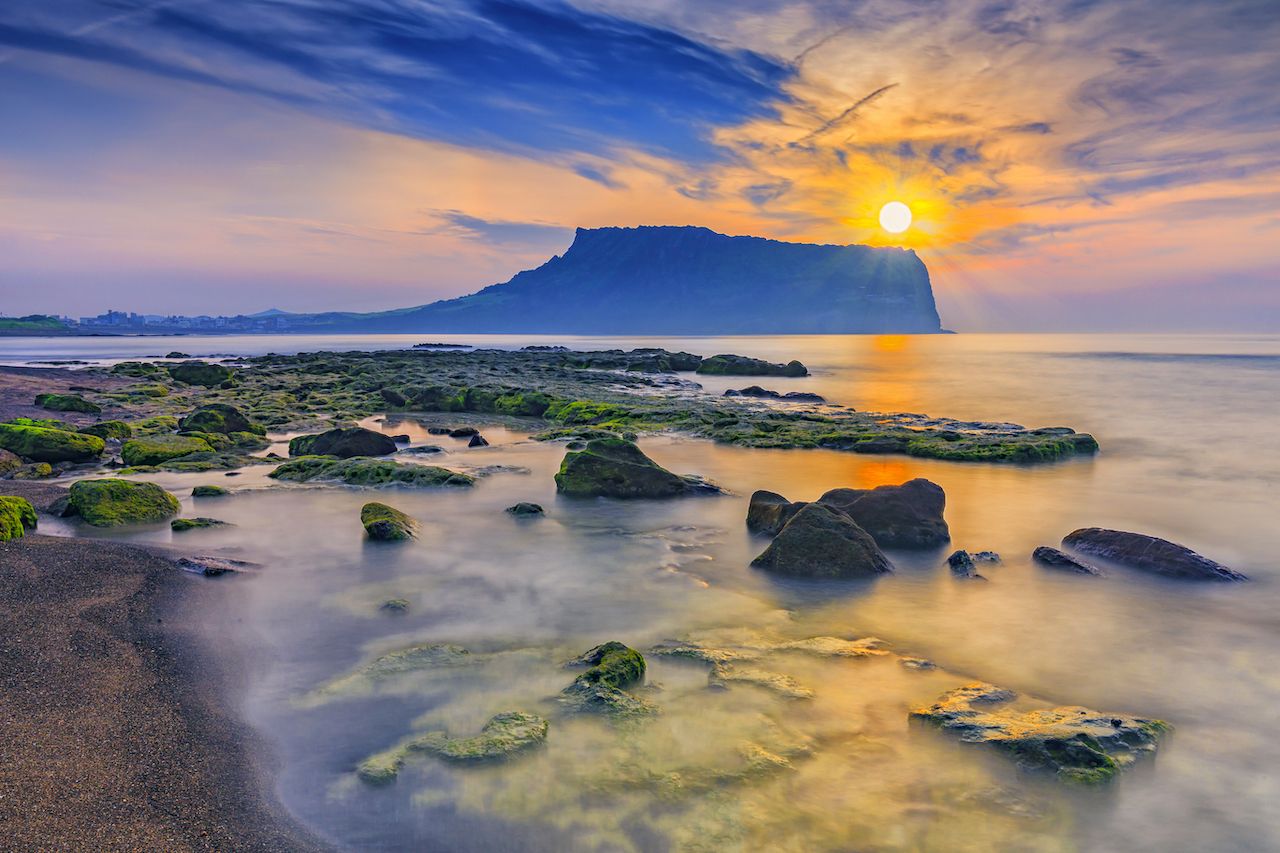
Photo: Natthawut Utsawachaichot/Shutterstock
Jeju Island is a volcanic island and province of South Korea that sits to the south of the peninsula between South Korea and Japan. It’s where you’ll find the Jeju Volcanic Island and Lava Tubes, including both the extensive Geomunoreum lava system and Mount Hallasan (the highest mountain in South Korea).
Ha Long Bay

Photo: Stephane Bidouze/Shutterstock
Ha Long Bay in northern Vietnam is a popular tourist destination thanks to its gorgeous limestone karsts and floating fishing village. The landscape formed by its 1,600-2,000 islands and islets, most of them uninhabited, is just spectacular. Thanks to these unusual landforms, many of them still unaffected by human impact, the area became a UNESCO World Heritage site in 1994.
Iguazu Falls
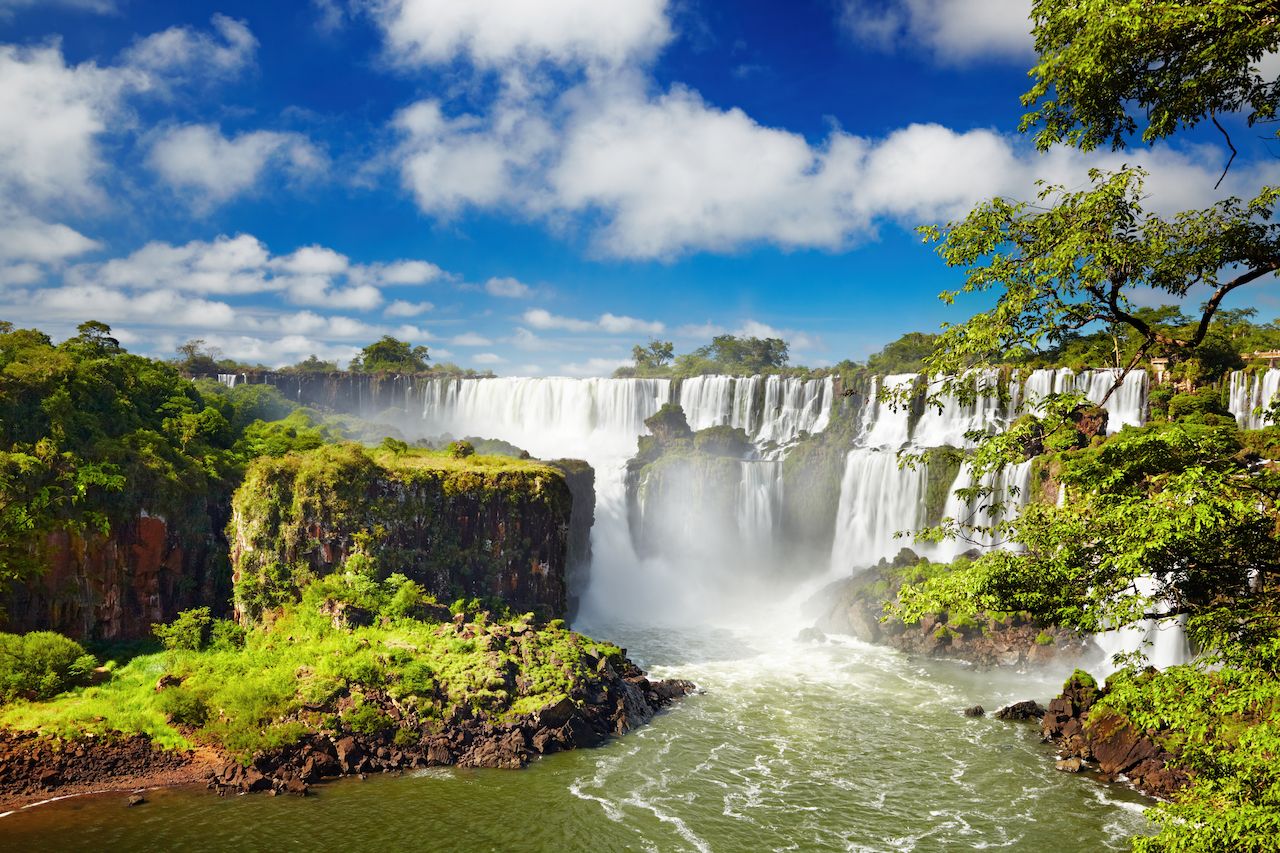
Photo: Dmitry Pichugin/Shutterstock
The famous Iguazu Falls straddles the Iguazu River on the border between Argentina and Brazil. Its name, Iguazu, means “big water” in Guarani, and it seems appropriate — made of 275 waterfalls, it’s the largest waterfall system in the world. The tallest of these waterfalls, where approximately half of the river’s flow falls, is called the Devil’s Throat — a long, narrow, U-shaped chasm whose thunderous sound visitors never forget.
Puerto Princesa Subterranean River
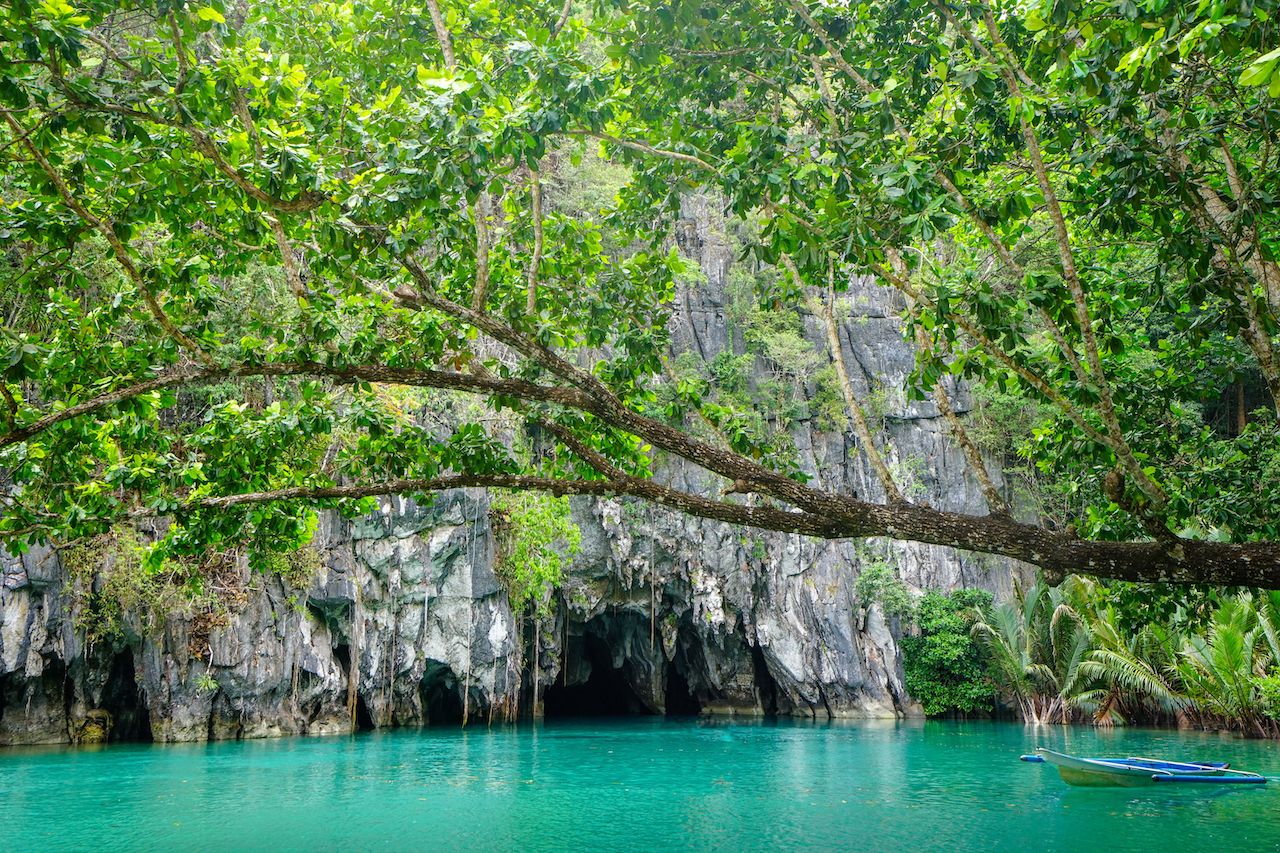
Photo: Dmitry Pichugin/Shutterstock
The Puerto Princesa Subterranean River is located on the Philippine Island of Palawan and leads into a cave that you can take boat tours through. It was impressive enough as it was, but in 2010, a group of environmentalists discovered the river has a second floor, so there are small waterfalls inside the cave. As the river emerges directly into the sea, its lower portion is subject to tidal influences.
Komodo Island
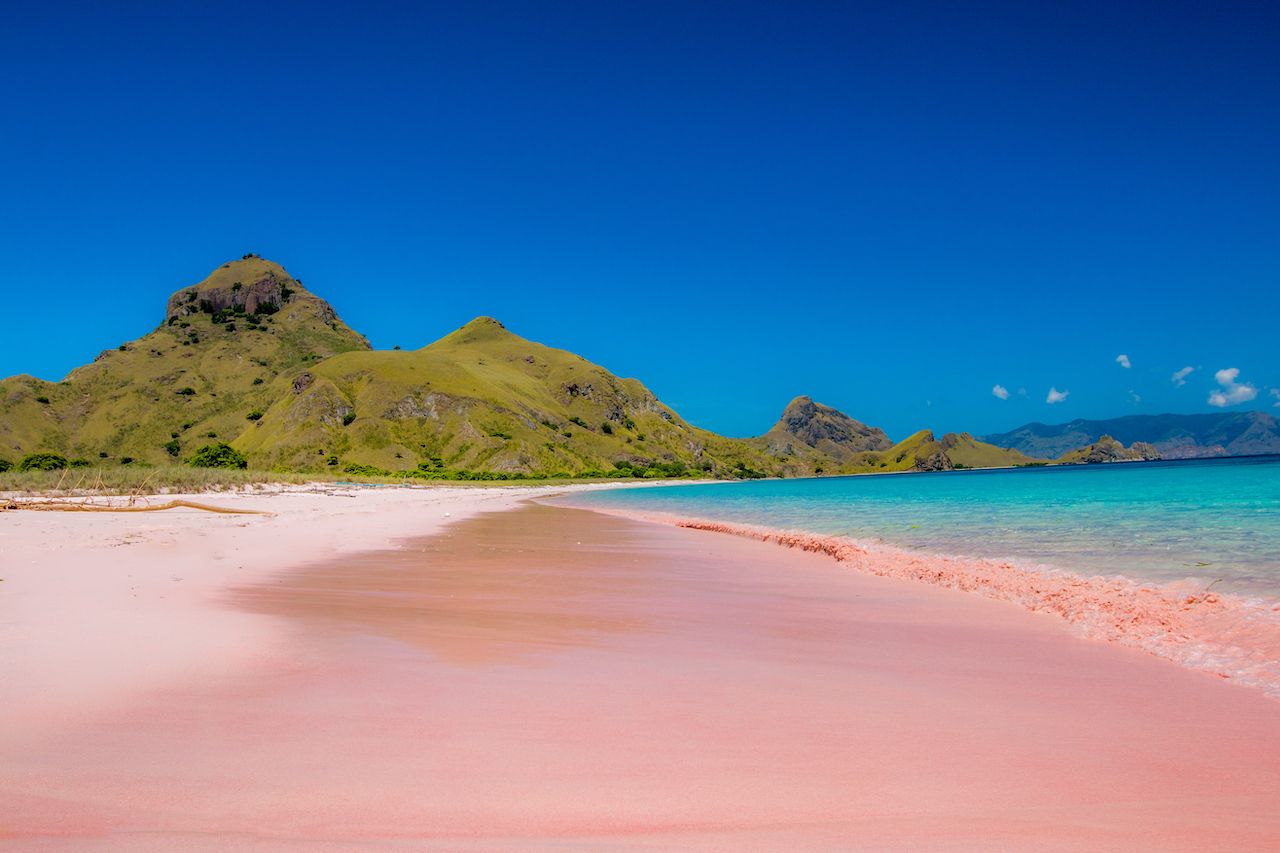
Photo: Pocholo Calapre/Shutterstock
Komodo Island is part of the Indonesian archipelago and is famous for being home to komodo dragons, in Komodo National Park. Its history also makes it a special place as its inhabitants (around 2,000, compared to the island’s 5,700 remaining Komodo dragons) are said to be descendants of former convicts who were exiled to the island in the 19th century by a sultan in Sumbawa. Also found on the island is Pink Sand Beach, one of the world’s best destinations for snorkeling and diving when the island is open to visitors.
Table Mountain
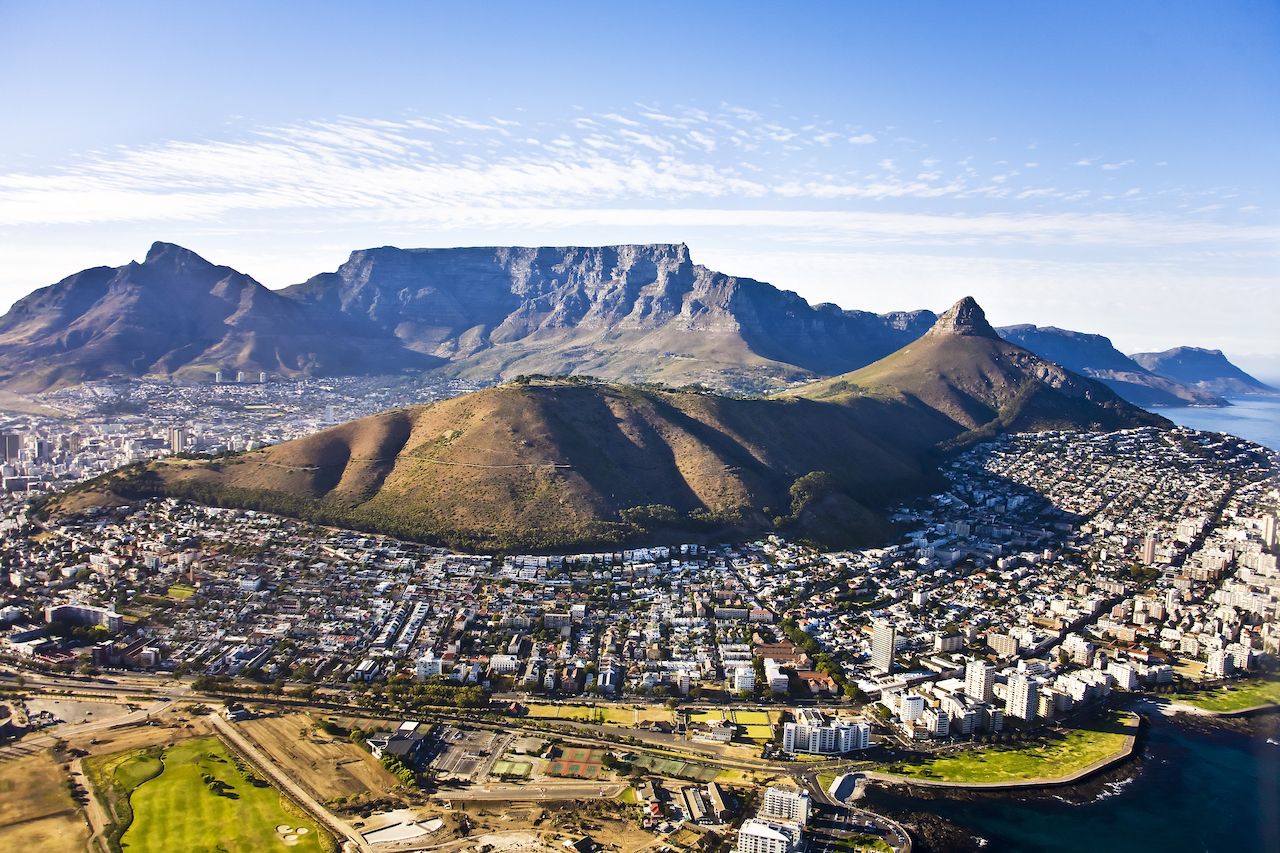
Photo: Andrea Willmore/Shutterstock
Table Mountain is a famous landmark that towers over Cape Town, South Africa. There are some great views of the city from the top (accessible via a hiking trail and cableway). Its main feature is a level plateau that stretches approximately two miles from side to side, edged by impressive cliffs. It’s also a cool place to practice some cloud watching — from afar — as the plateau is often covered by the famous tablecloth clouds.
Other wonders of the natural world nominations
While the wonders below didn’t make the final list with the New7Wonders foundation, they’re arguably just as impressive, and you’ll find them nominated on many a list of potential new additions.
The Great Barrier Reef
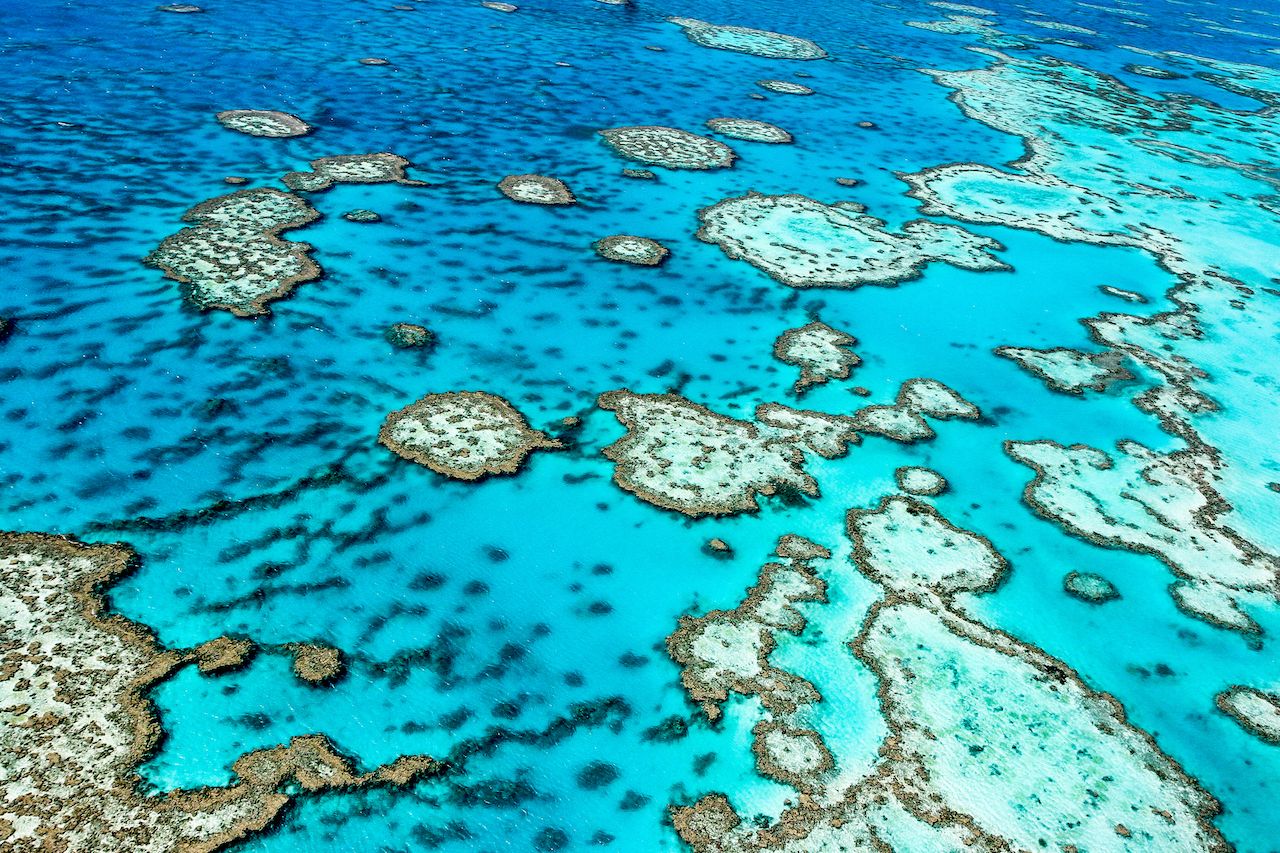
Photo: Edward Haylan/Shutterstock
Australia’s famous, gigantic barrier reef is sadly at risk of being destroyed by climate change, overfishing, and tourism. Coral bleaching is more widespread than previously thought, and scientists have admitted this great wonder is at a terminal stage and in desperate need of humans to alter their behavior. It’d be a sad end for the largest natural structure inthe world.
The Grand Canyon
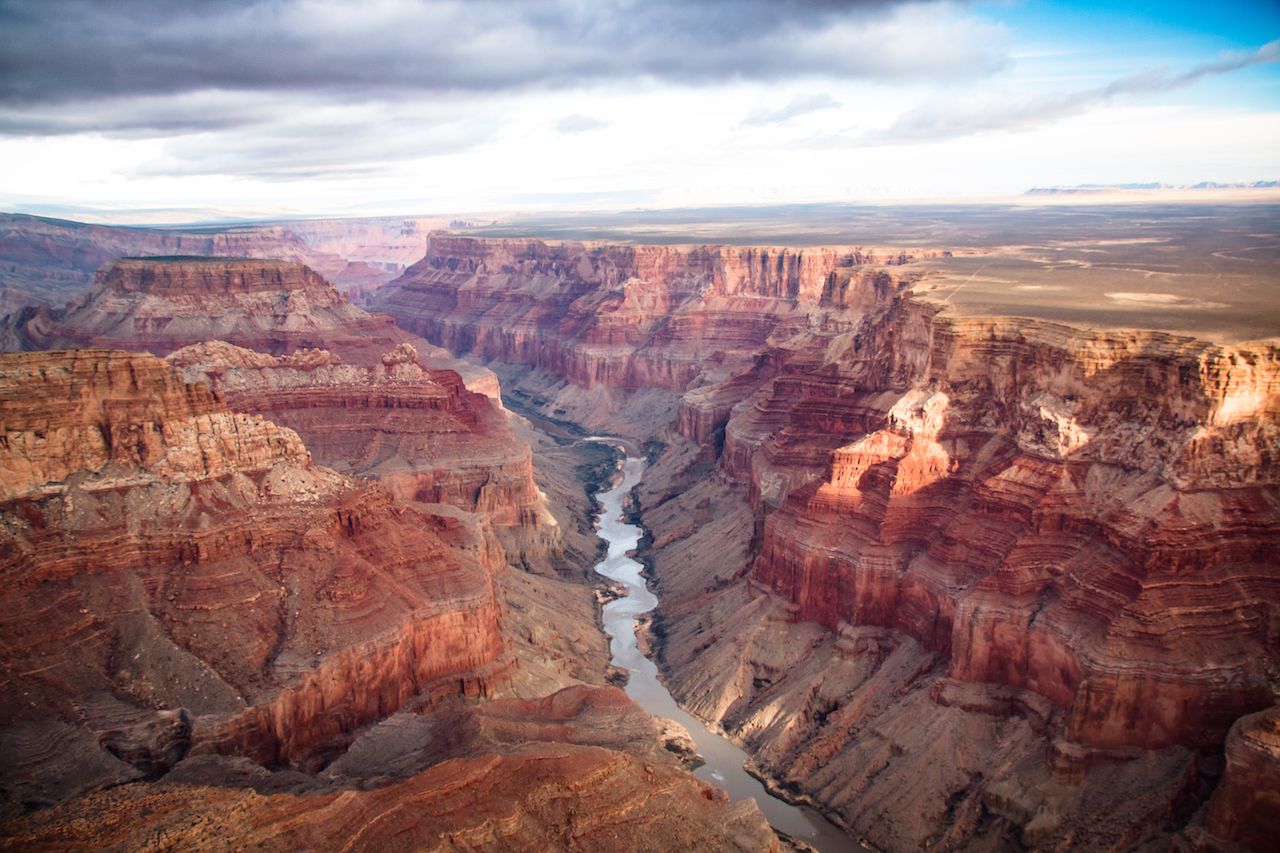
Photo: Amineah/Shutterstock
The famous, massive canyon cut by the Colorado River through Arizona is one of the few wonders that belongs on every iteration of this list. At 277 miles long, up to 18 miles wide, and attaining a depth of over a mile, it’s not the longest nor the steepest canyon in the world, but its overall scale combined with the beautifully colored landscape makes it one of the most amazing natural wonders. The Colorado River has been carving this canyon over the course of, according to several studies, five to six million years.
Harbor of Rio de Janeiro
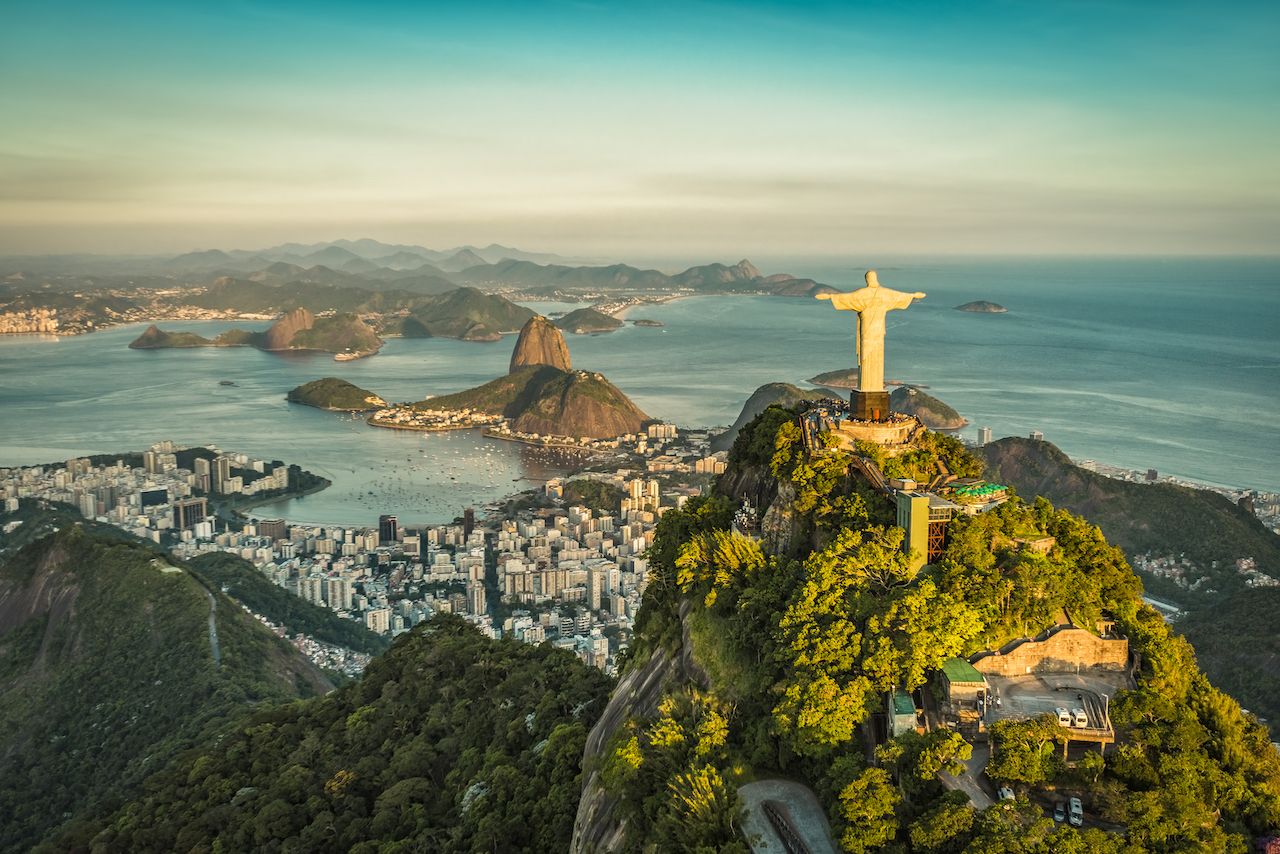
Photo: marchello74/Shutterstock
Brazil’s most famous city fills in the spaces between the surrounding mountains and the ocean, making it one of the most beautiful cities on Earth. Above it all, it’s watched over by the Christ the Redeemer statue — one of the regularly cited man-made wonders of the world.
Mount Everest

Photo: UBC Stock/Shutterstock
Everest’s peak is 29,035 feet above sea level, or at least it was. Nepal’s earthquake in 2015 is believed to have clipped the mountain’s height, so India and Nepal are about to measure it afresh. For the sake of counting these, if you’ve seen Mount Everest, located on the border of Nepal and Tibet, you’ve been to it. You don’t have to have made it to the summit.
Nighttime aurorae
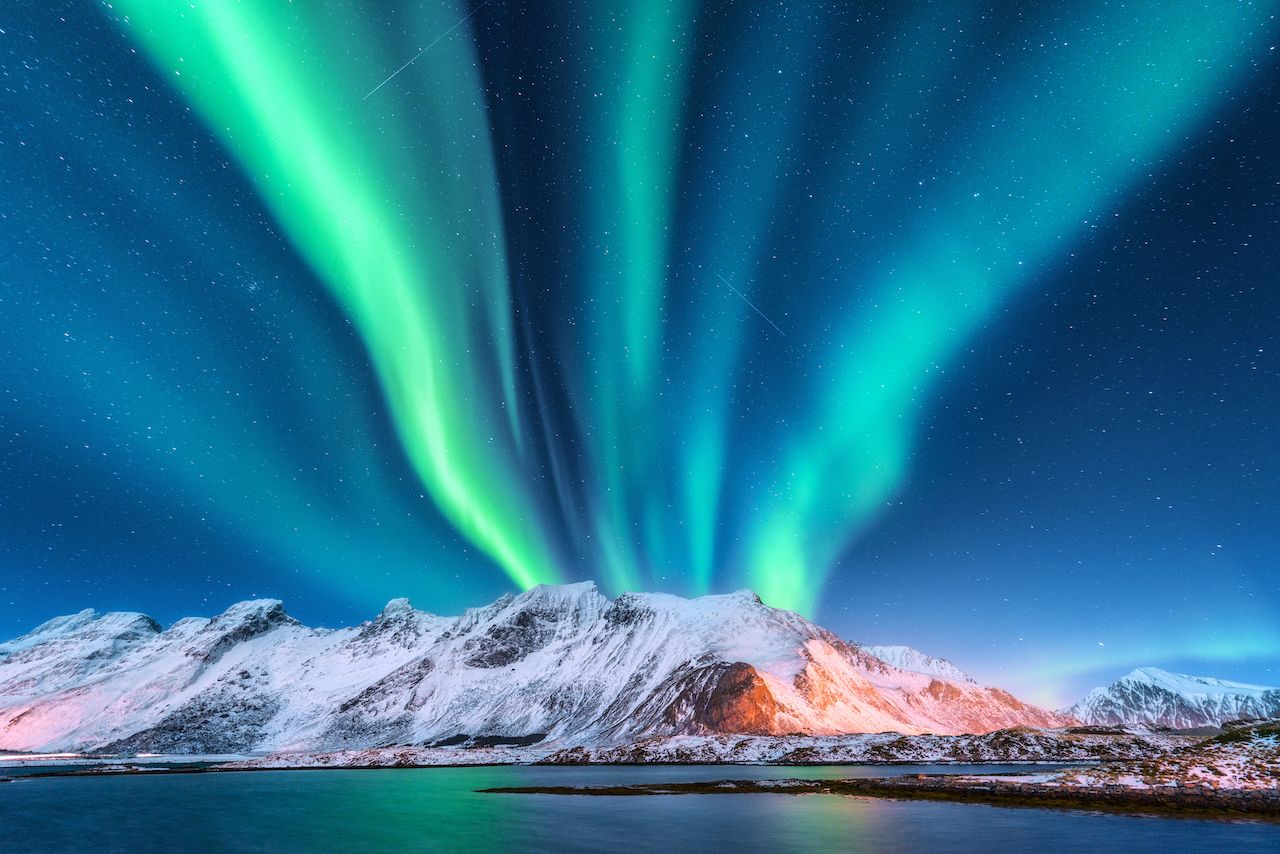
Photo: Denis Belitsky/Shutterstock
The aurora (also known as the aurora borealis, northern lights in the north, and aurora australis in the south) is caused by the collision of solar winds with Earth’s magnetosphere and can be viewed from pretty much anywhere within certain latitudes, depending on the visibility and severity of the geomagnetic storms.
Victoria Falls
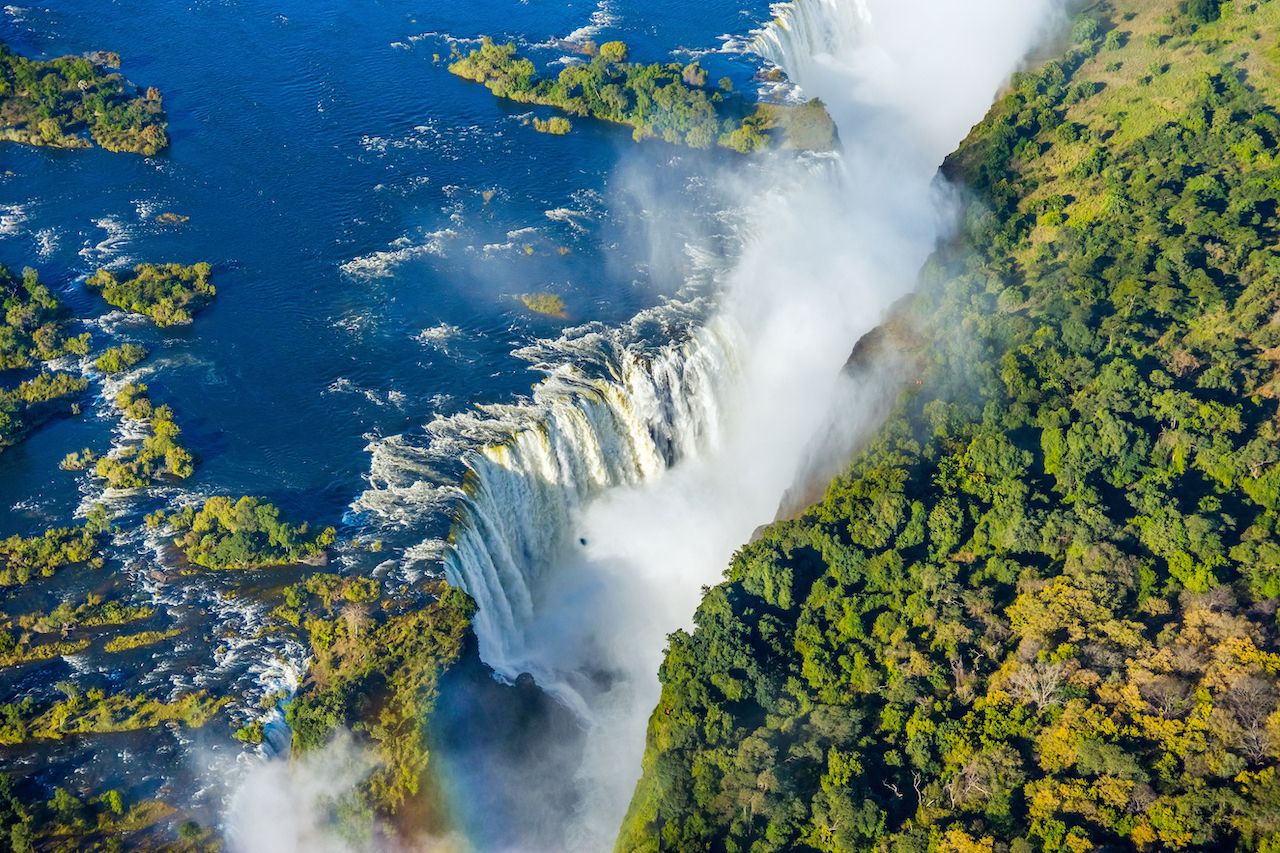
Photo: Efimova Anna/Shutterstock
Victoria Falls — on the Zambezi River between Zimbabwe and Zambia — is the largest waterfall by volume in the world at over 5,500 feet wide and 355 feet high. Its local name in Tokaleya Tonga is Mosi-oa-Tunya, which literally means “the smoke that thunders,” gives a perfect explanation of what you’ll feel if you get close to it.
Paricutín volcano

Photo: Rubi Rodriguez Martinez/Shutterstock
Paricutín volcano in Mexico makes it on most lists just for the sheer bizarreness of its history. It was a cornfield in 1943 and then, in the span of a year, grew to a height of 11,475 feet. By the time the volcano’s eruptions ceased in 1952, its peak measured a whopping 9,210 feet above sea level. The villages around it are buried in lava, and only a church bell tower juts out from the rock.
Moraine Lake
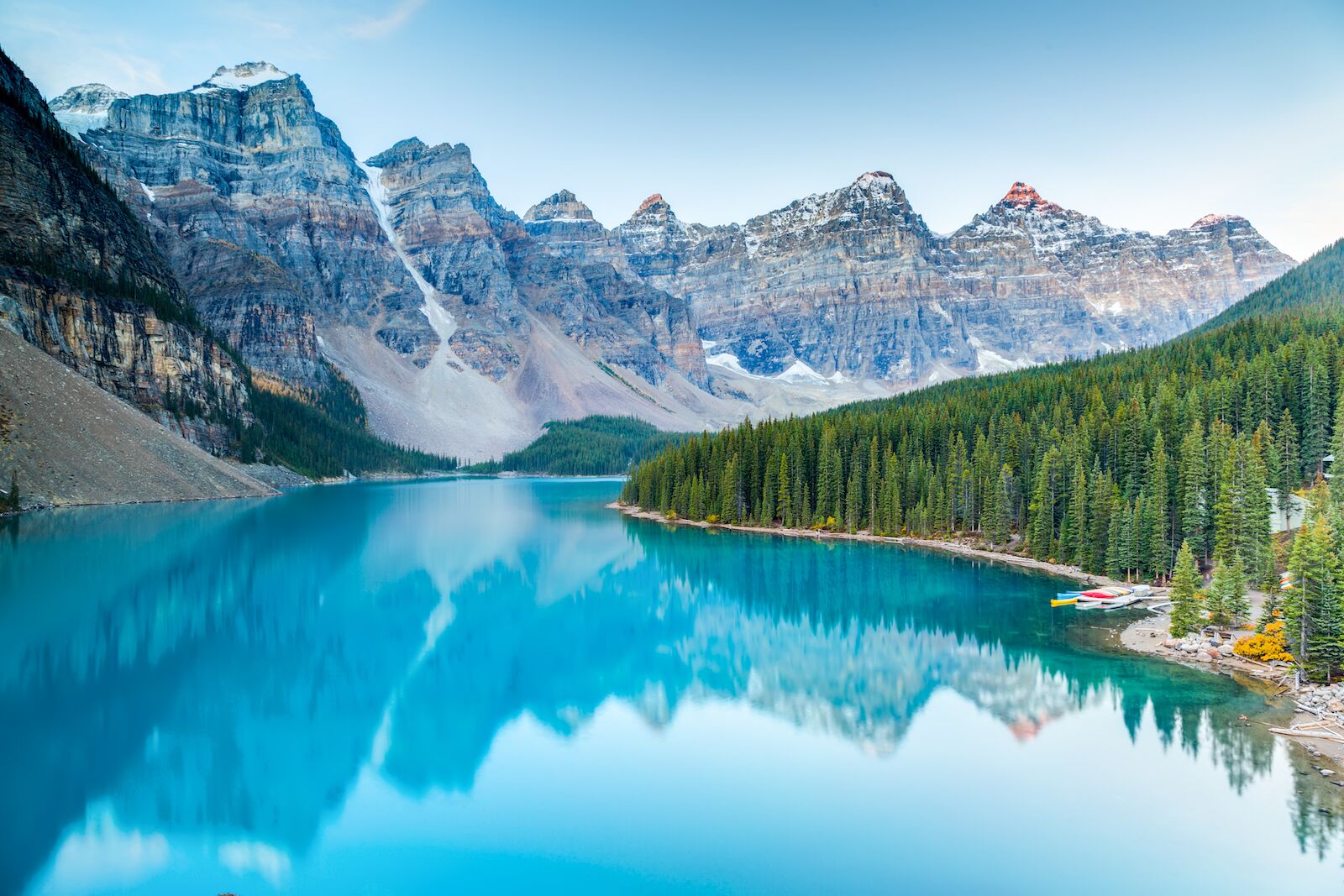
Photo: Zhukova Valentyna/Shutterstock
Moraine Lake, which you may recognize from many a default screensaver, is one of the most beautiful — and busiest — places in Canada. Near Lake Louise, Moraine Lake shares the same distinctively blue water, caused by tiny rock particles from the nearby glaciers that float on the surface and reflect that brilliant blue color. If you want to visit, you’ll need to take a shuttle from Lake Louise Ski Resort. Try to get there as early as possible. If it’s too crowded, opt for the hike to a high-elevation at nearby Lake Louise, which looks down on the Victoria Glacier.
The Dead Sea
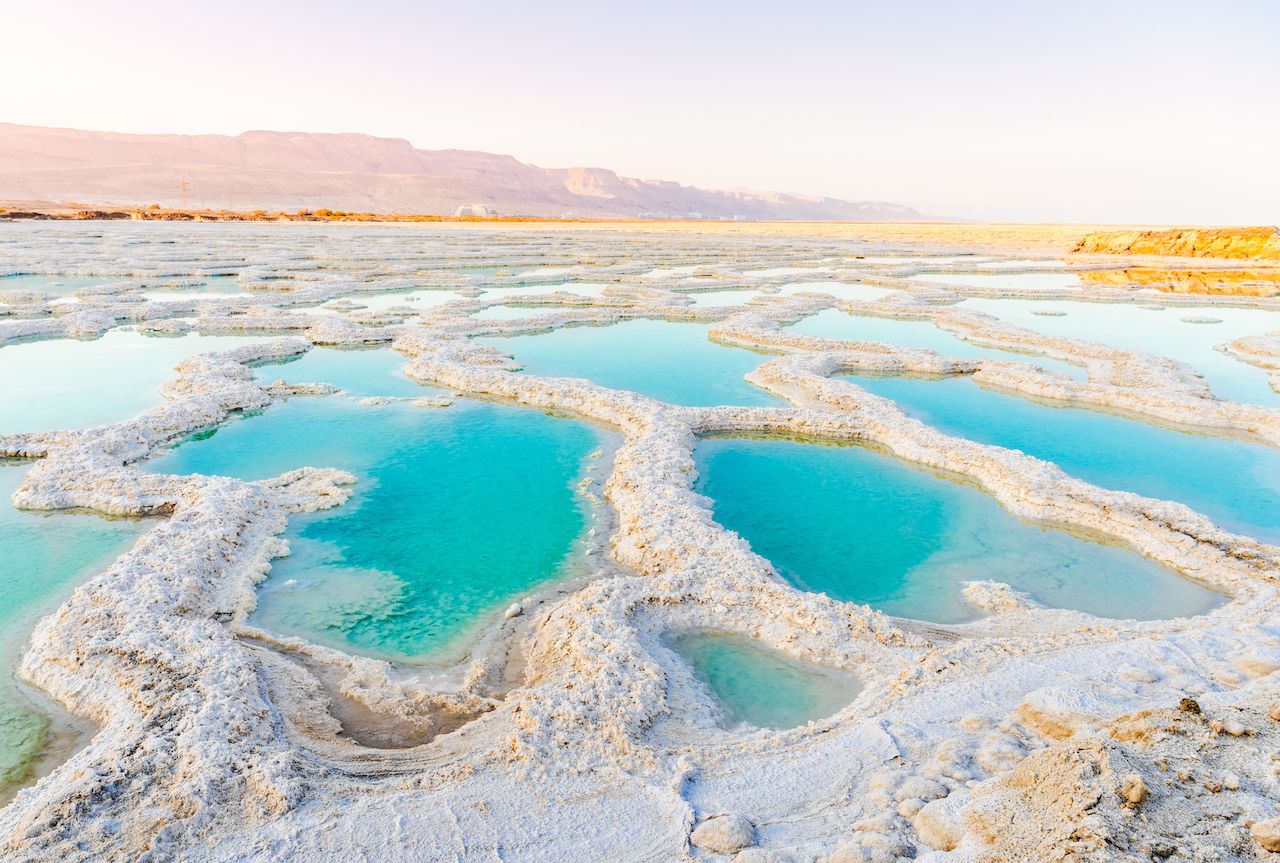
Photo: Olesya Baron/Shutterstock
The Dead Sea, on the border of Jordan and Israel, is one of the saltiest bodies of water in the world. So salty that you can famously float in it and that no macroscopic organisms can survive in it. It was one of the world’s first health resorts (for Herod the Great) and has supplied a wide variety of products, from asphalt for Egyptian mummification to potash for fertilizers. However, it’s receding at an alarming rate.
Mount Kilimanjaro
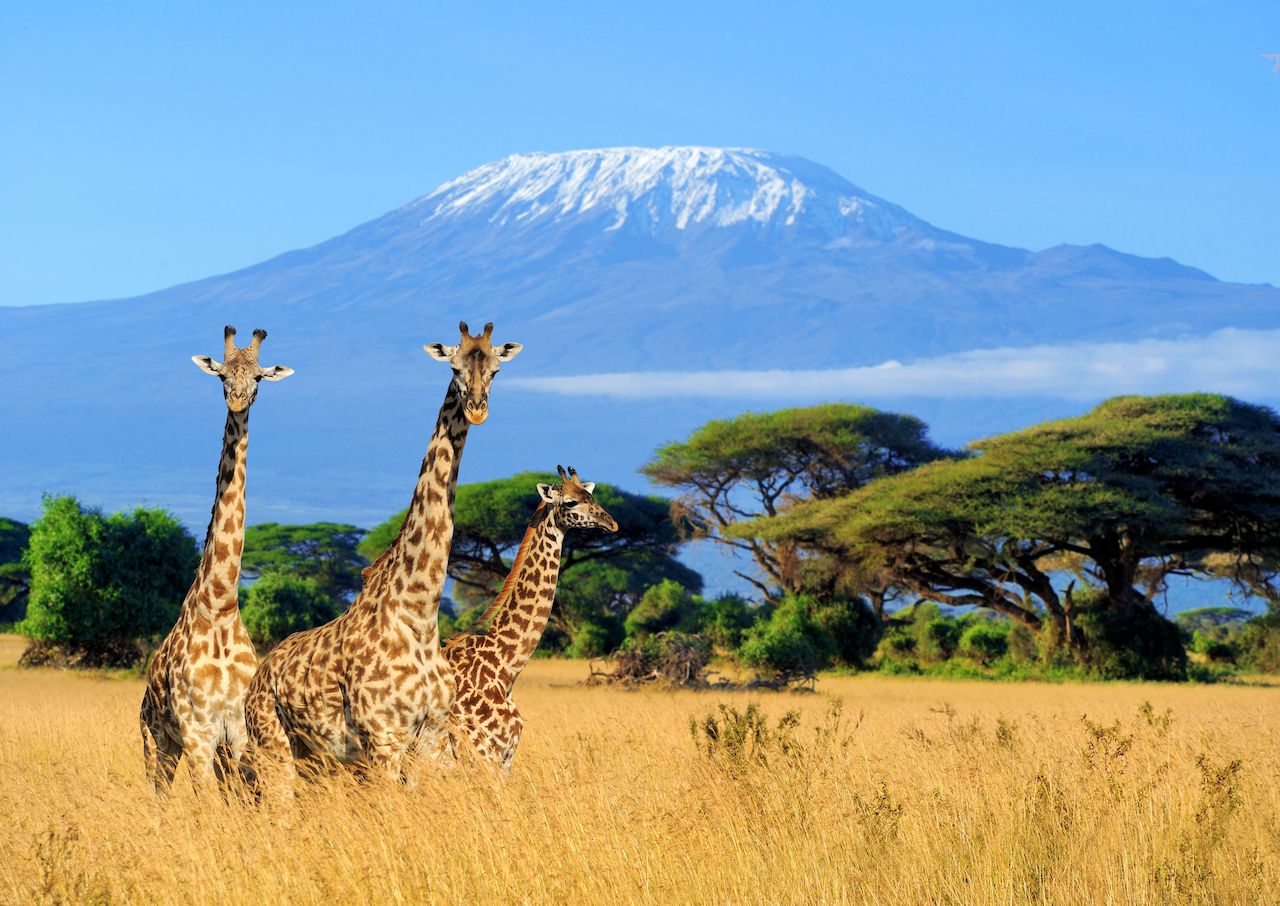
Photo: Volodymyr Burdiak/Shutterstock
Kilimanjaro is Africa’s tallest mountain and, as it’s a dormant volcano, the tallest free-standing, or non-massif, mountain in the world. Since Hans Meyer and Ludwig Purtscheller reached its summit in 1889, it has remained a popular climbing destination. It has also been the subject of many scientific studies because of its shrinking glaciers.
Jeita Grotto

Photo: Florian Kriechbaumer/Shutterstock
The Jeita Grotto is a series of karst caves in Lebanon that was inhabited in prehistoric times and is now a major cultural symbol of the nation, not to mention a practical one considering it supplies drinking water to over a million Lebanese people.
Masurian Lake District
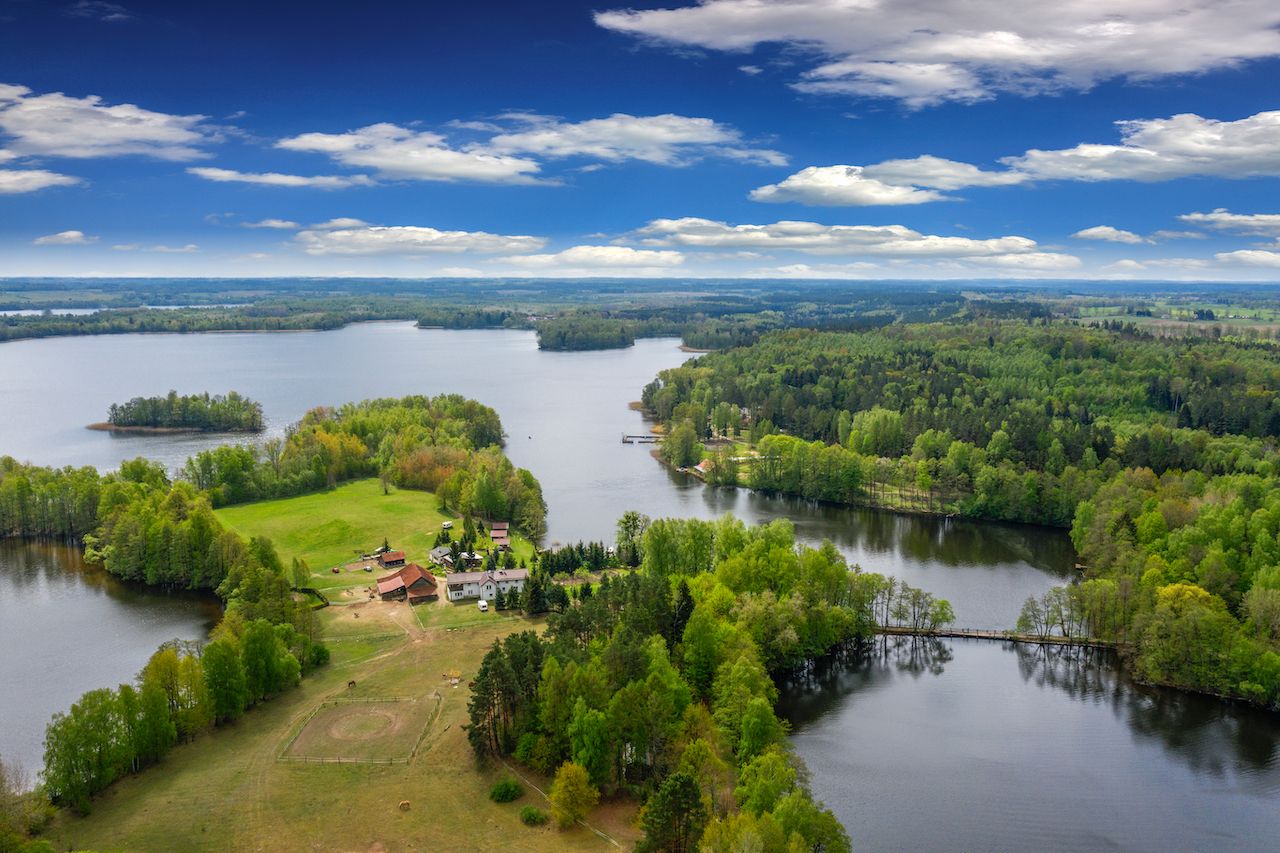
Photo: Janusz Lipinski/Shutterstock
This well-connected system of lakes (comprising over 2,000) in Poland is a popular European vacation spot. Connected by rivers and canals, the lakes form an extensive system of waterways surrounded by large forests and historic towns. It’s a great destination if you like water sports like sailing or windsurfing, as well as activities such as hiking, fishing, and kayaking.
The Sundarbans
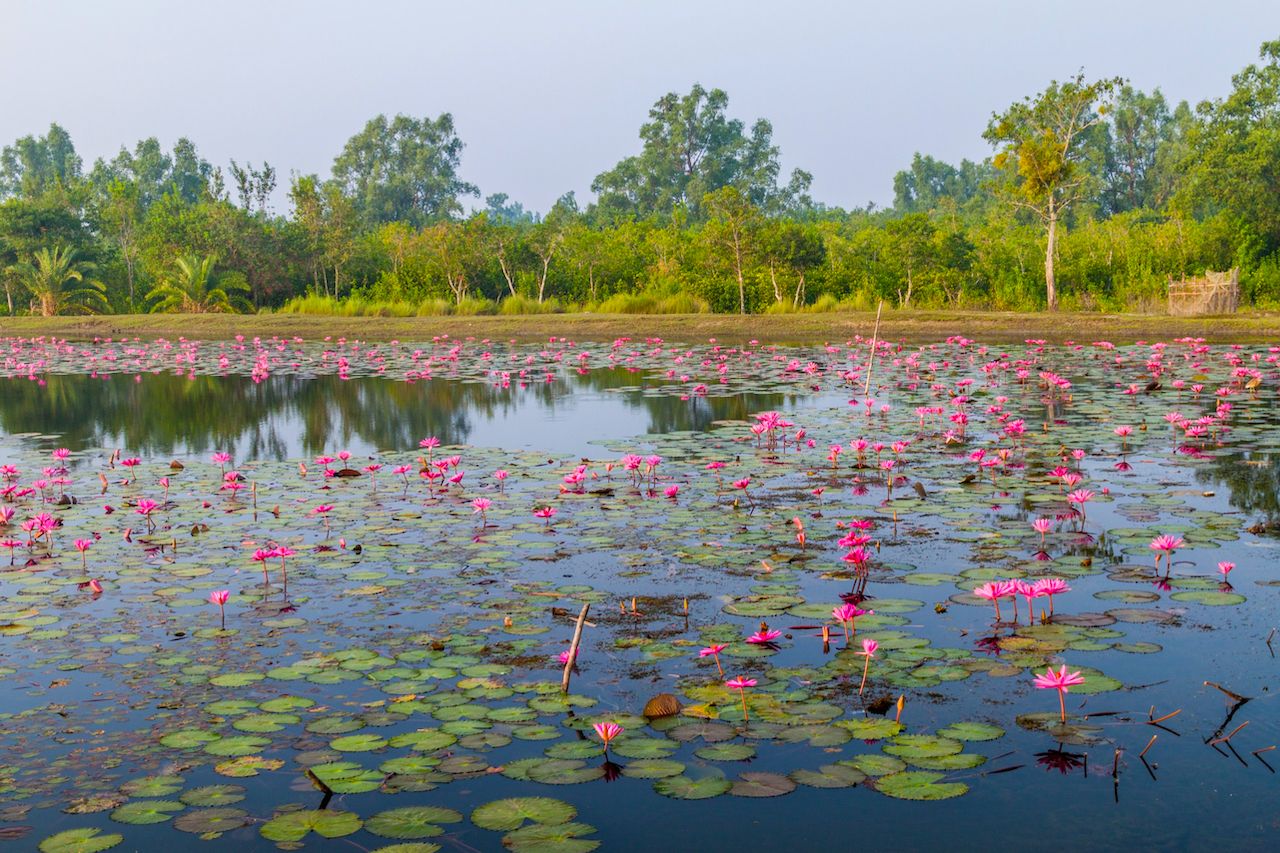
Photo: Matyas Rehak/Shutterstock
The Sundarbans — mostly in Bangladesh, though partially in easterm India — is one of the world’s largest tidal mangrove forests, and it’s famous for also being one of the largest Bengal tiger reserves. A UNESCO World Heritage site since 1987 on the Indian side and 1997 on the Bangladesh side, it covers 140,000 hectares and is home to a wide range of wild fauna, including 260 bird species and other threatened species, such as the estuarine crocodile and Indian python.
Maldives

Photo: icemanphotos/Shutterstock
Kudos to the Maldives for getting the entire country on the list. The Maldives is a series of coral atolls in the Indian Ocean, and if climate change raises sea levels by even a little bit, it will no longer exist — the nation’s highest point is only about seven feet and 10 inches off the water (it’s the world’s lowest country). Its waters are home to several ecosystems, including 187 species of vibrant hard coral. This area of the Indian Ocean alone houses 1,100 species of fish, five species of sea turtles, 21 species of whales and dolphins, 400 species of mollusks, and 83 species of echinoderms.
Angel Falls
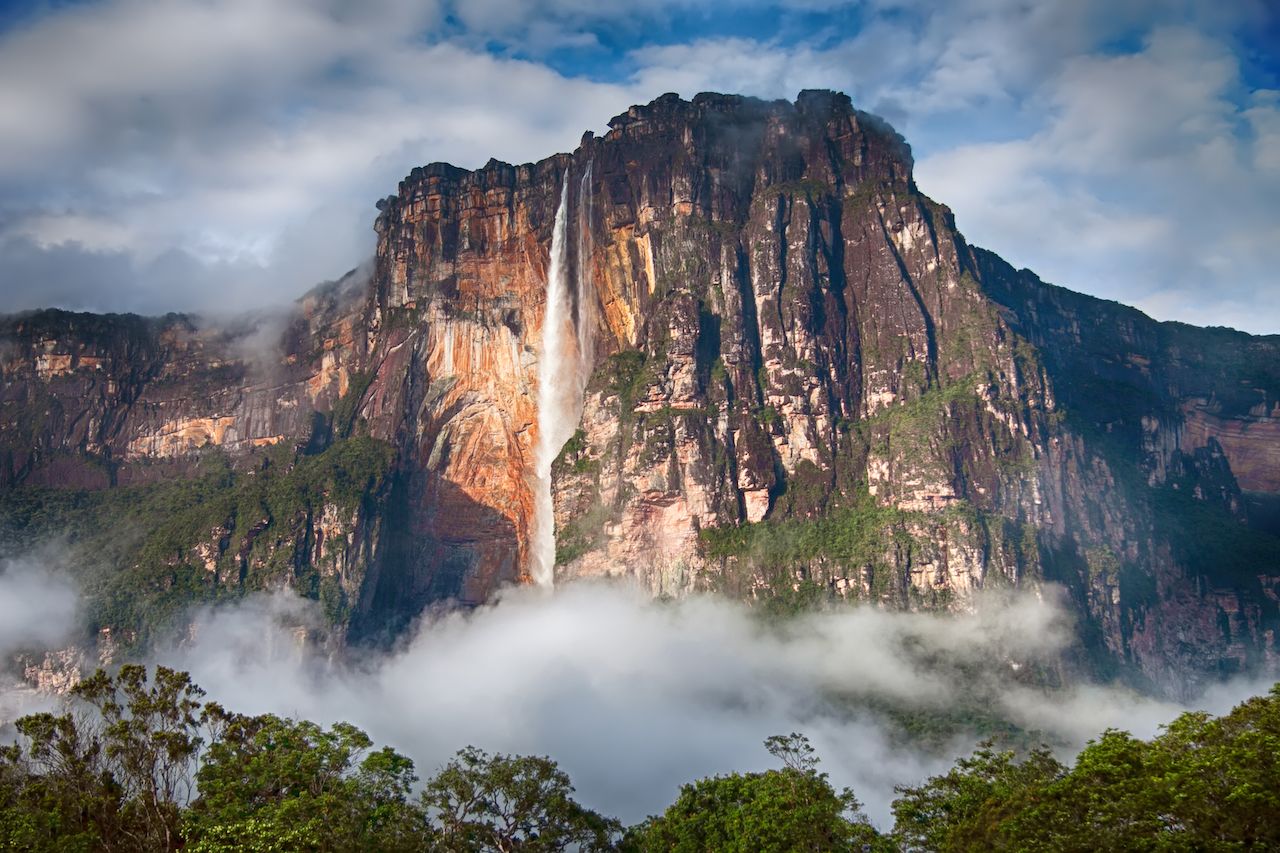
Photo: Alice Nerr/Shutterstock
The world’s tallest uninterrupted waterfall (at 3,212 feet) is in the jungles of Venezuela and undoubtedly one of the best natural wonders of the world, whether it’s on a list or not. It was not known to the outside world until American aviator Jimmie Angel, following directions given by the explorer Félix Cardona who had seen the waterfall six years before, flew over Angel Falls on November 16, 1933. The falls are named after him.
Bay of Fundy
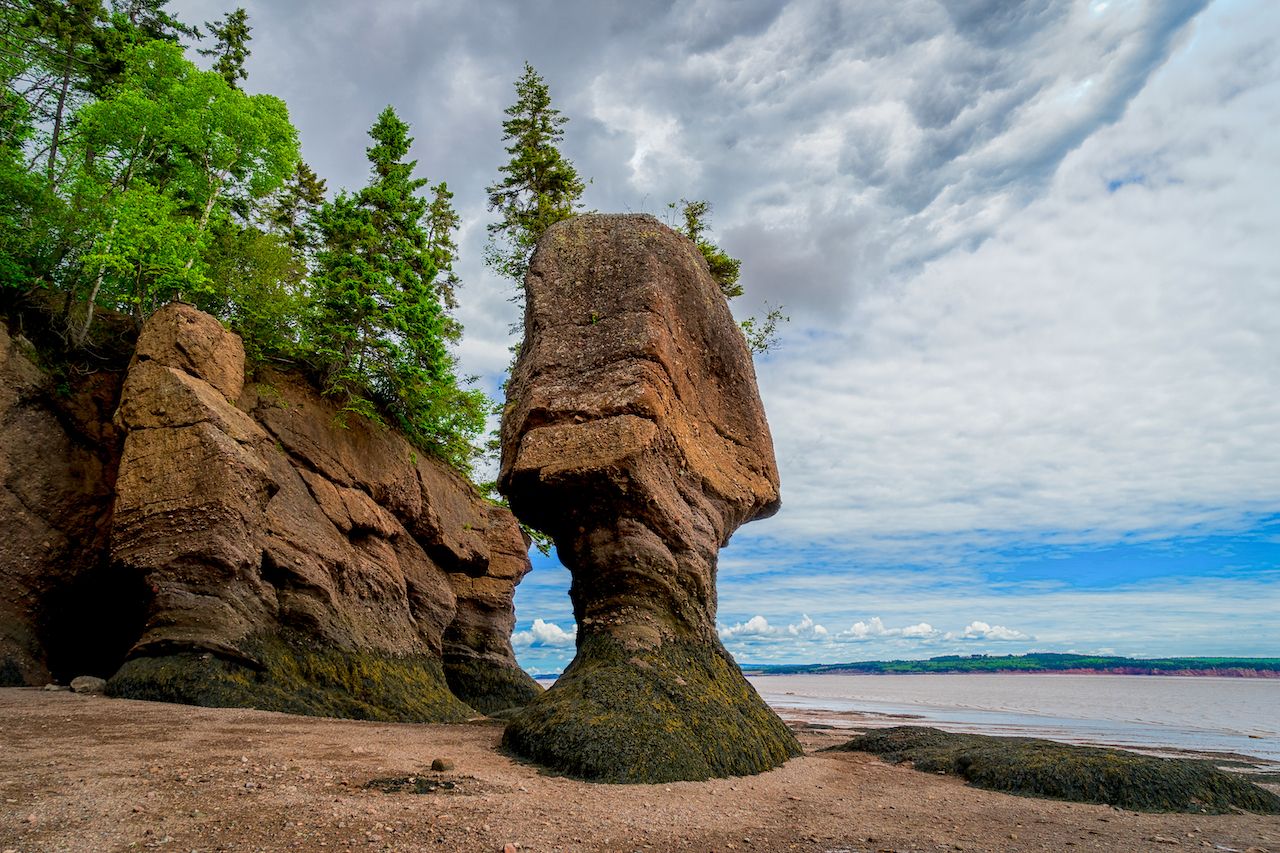
Photo: V J Matthew/Shutterstock
Canada’s Bay of Fundy is famous for having the highest tidal ranges in the world, with an incredible maximum of 53 feet (though the highest water level ever recorded was a whopping 71 feet in 1869). It’s also a popular whale-watching destination — 12 species of whales, including the rare right whale, call the Bay of Fundy home each summer and fall.
The Black Forest
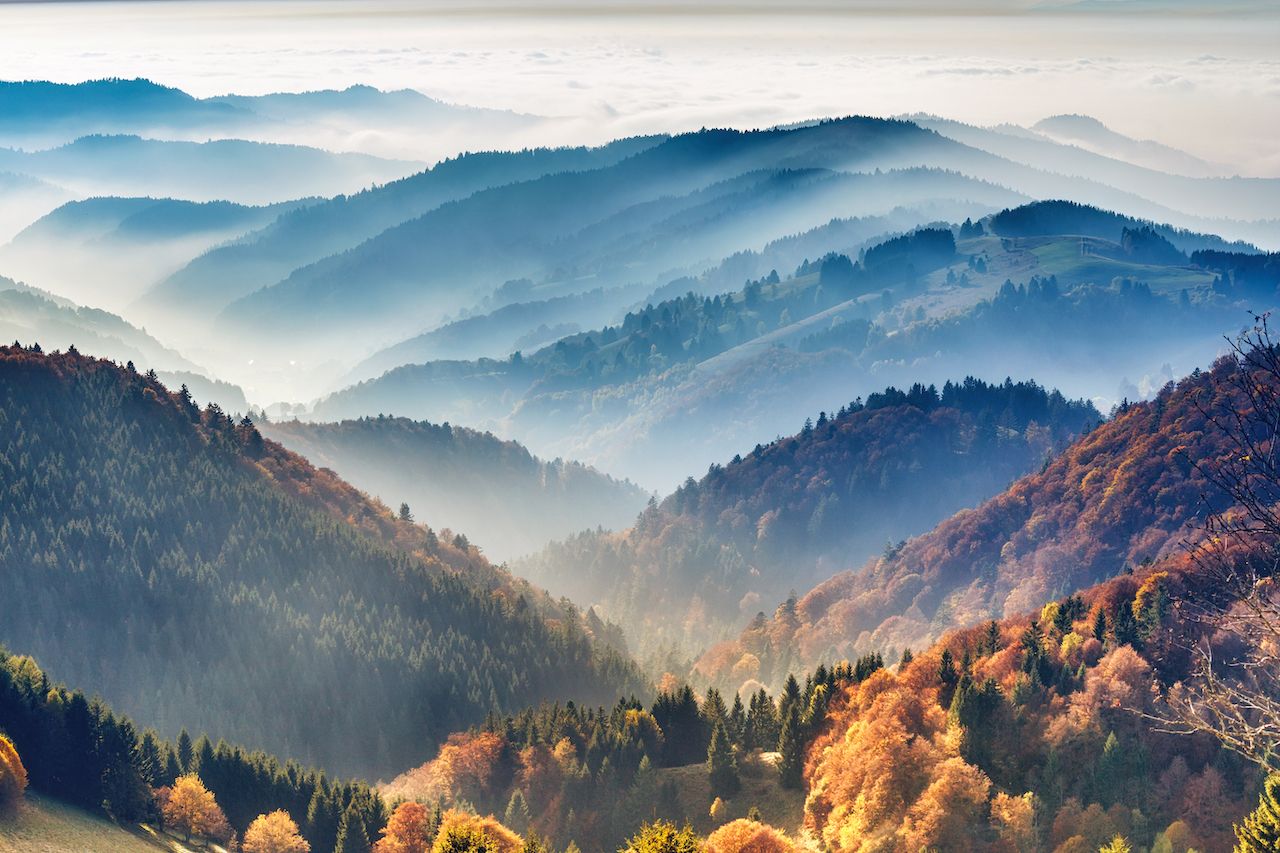
Photo: Funny Solution Studio/Shutterstock
Germany’s famous Black Forest is famously dense and dark, but it’s also home to the cuckoo clock, charming little towns, and fairytale castles. It’s the place where Hansel and Gretel had their encounter with the witch and where Little Red Riding Hood was followed by the wolf.
The Cliffs of Moher
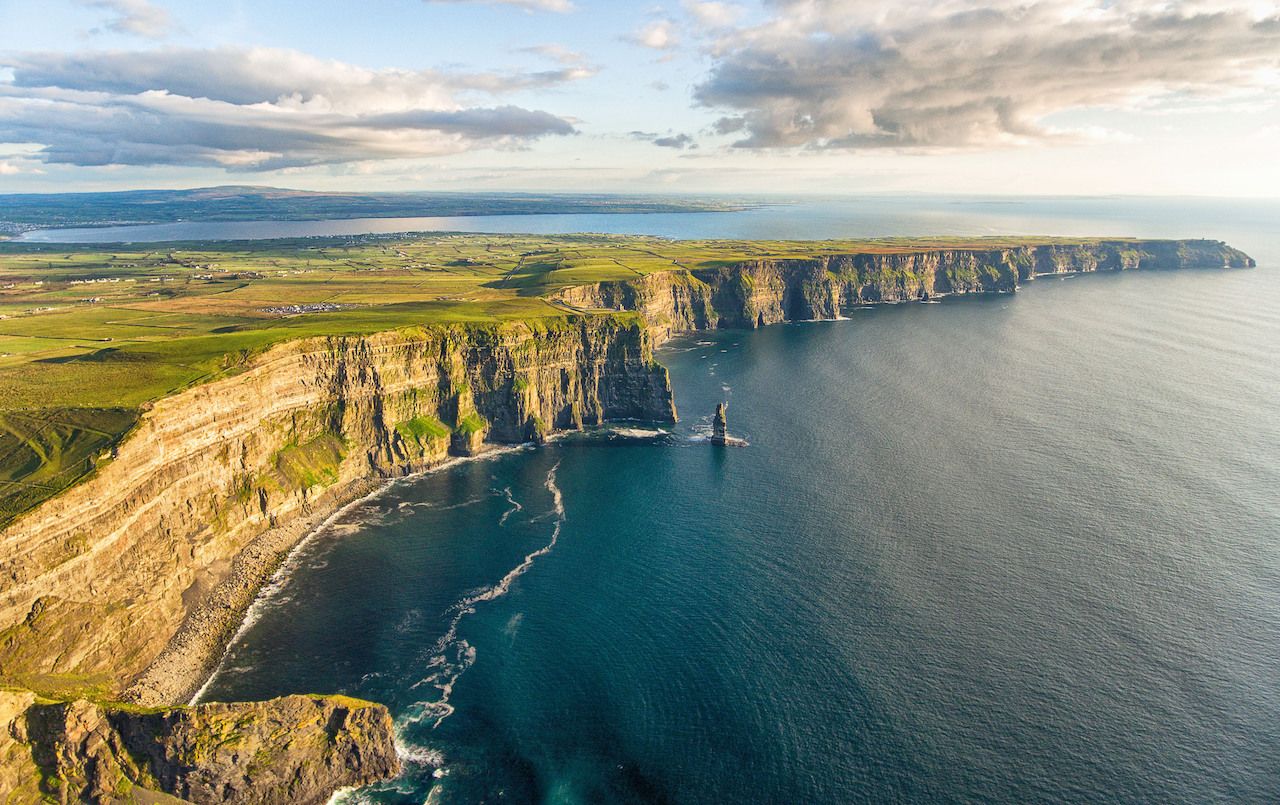
Photo: shutterupeire/Shutterstock
Western Ireland’s Cliffs of Moher are one of the country’s most popular tourist destinations. And for good reason. The cliffs hug the Atlantic Ocean for roughly five miles and, at their tallest, tower around 700 feet over the sea. Not just popular with people, the Cliffs of Moher also provide a habitat for more than 20 different types of seabirds, including puffins and peregrine falcons.
El Yunque
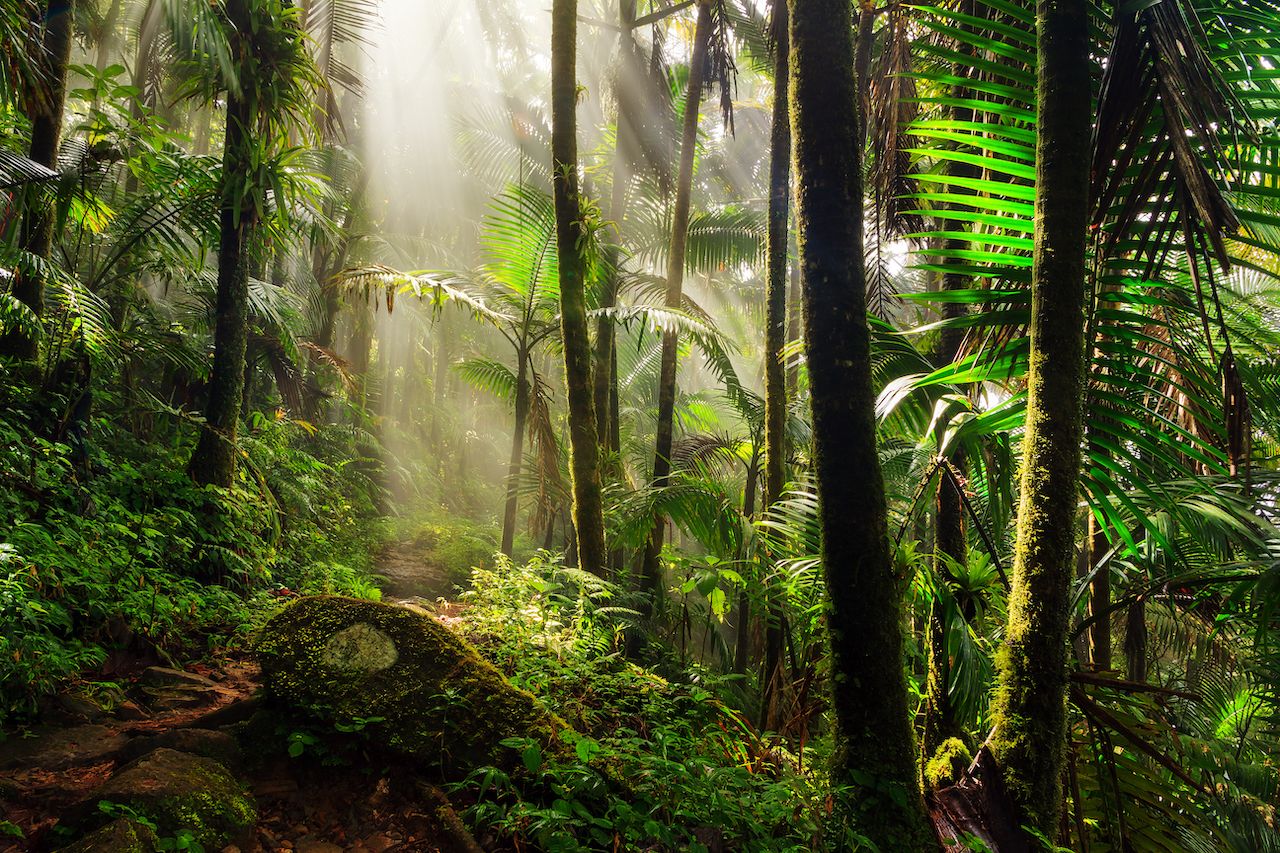
Photo: Dennis van de Water/Shutterstock
Stretching a modest 29,000 acres, El Yunque is the only tropical rainforest in the US National Forest System and just a short drive east of San Juan, Puerto Rico. Within the park are opportunities to swim in waterfall pools, rare species of tree frogs called coqui frogs, and excellent hikes through some of the lushest forest in the US. It’s easy to take a day trip from San Juan, but there are plenty of ecolodges and boutique hotels in nearby towns like Fajardo or Ceiba if you think you’ll want to stay for a few days.
The Galapagos Islands
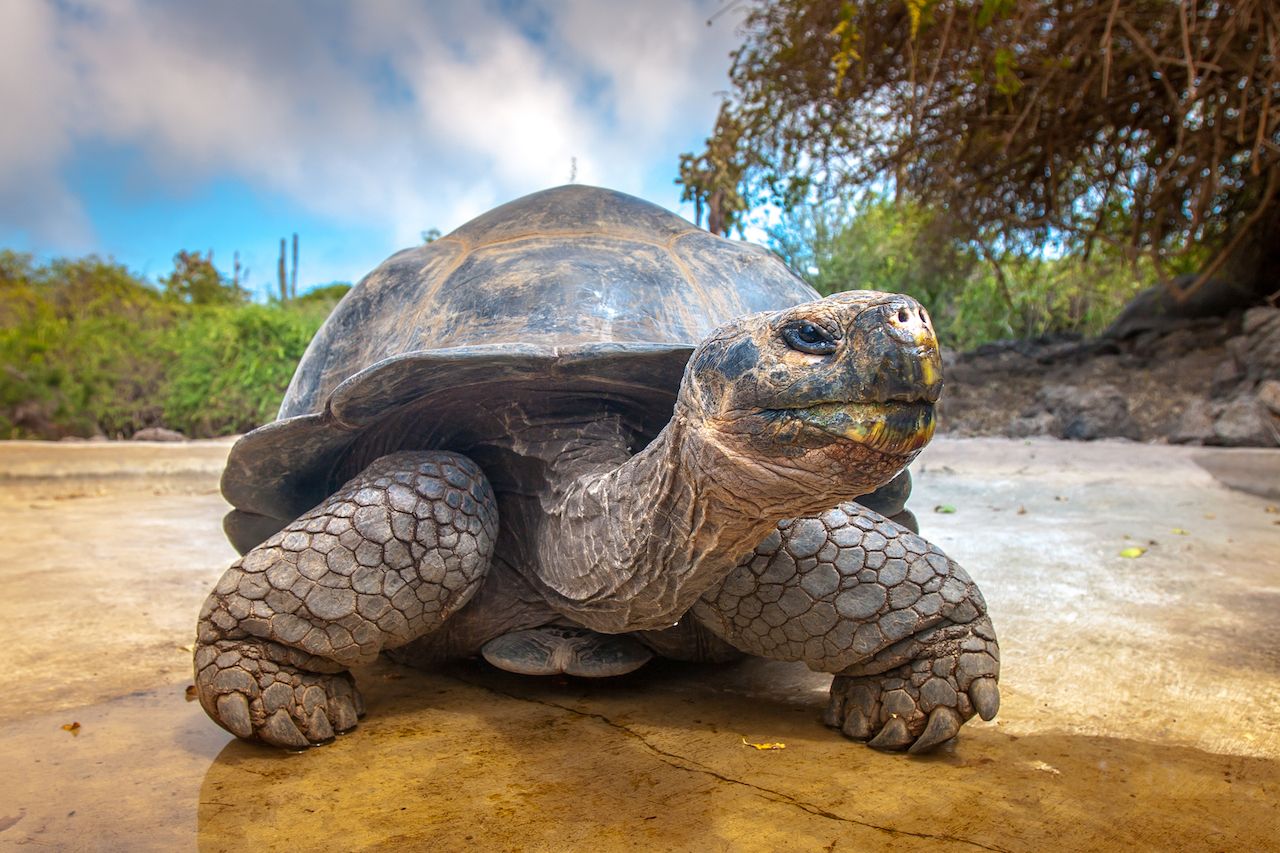
Photo: FOTOGRIN/Shutterstock
Among the natural wonders, the Galapagos Islands are perhaps most famous for their biological diversity, which informed Charles Darwin’s groundbreaking theory of evolution by natural selection. Among the islands’ most iconic inhabitants are the giant tortoise, blue-footed booby, Galapagos albatross, Santa Fe land iguana, and Galapagos fur seal. Together, all of the species that visitors are most eager to see are known as the Big 15, a play on Africa’s Big Five safari animals.
The Matterhorn
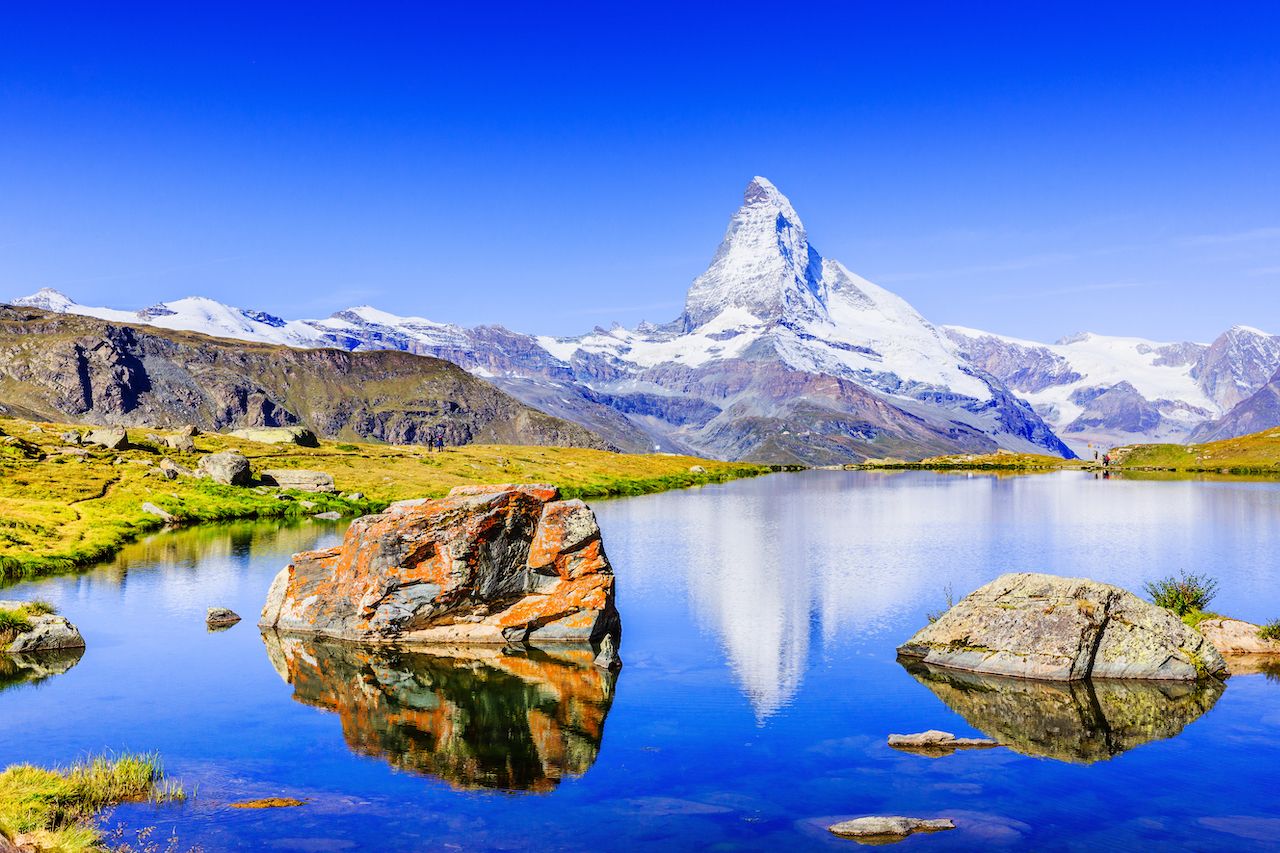
Photo: emperorcosar/Shutterstock
The Matterhorn, which rises to 14,692 feet between Italy and Switzerland, is considered one of the most difficult mountains to climb in the world, particularly from the Italian side. While expert rock climbers may be able to summit it, for everyone else, the best way to see it is to take the Matterhorn Gondola from Zermatt. Though if the weather is really nice, you’ll be able to see the Matterhorn from various vantage points around town.
Milford Sound
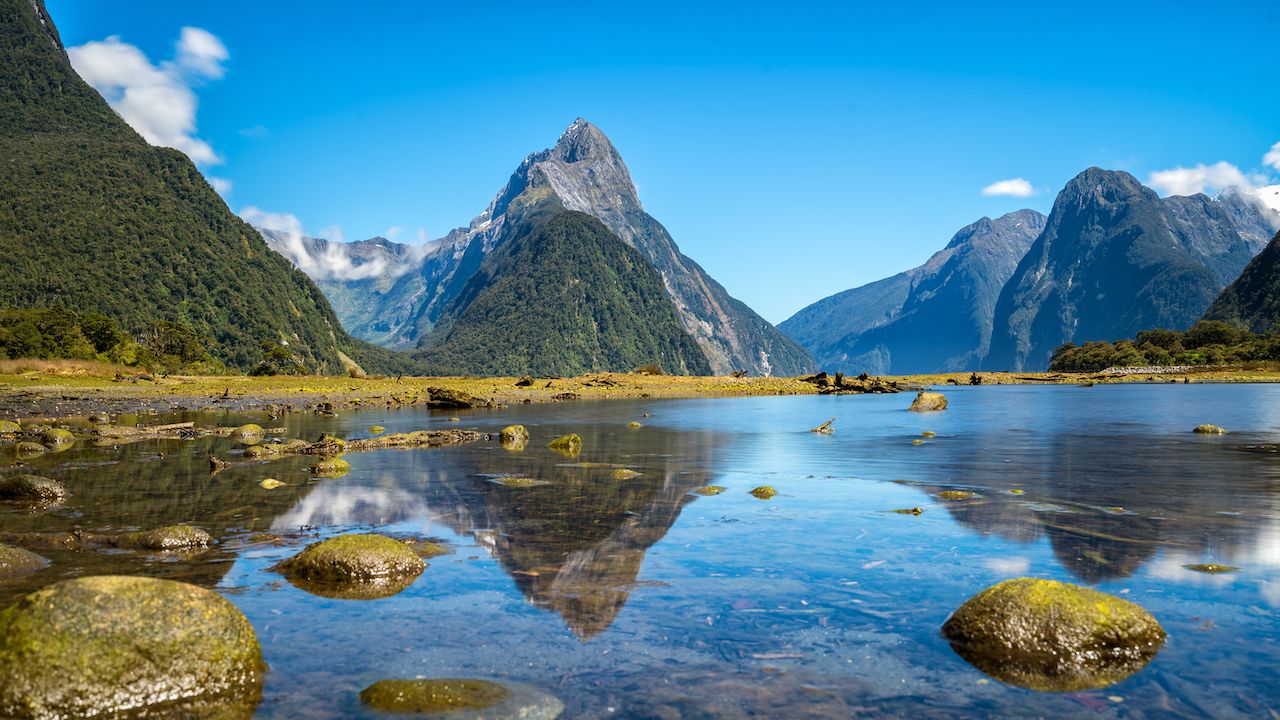
Photo: Blue Planet Studio/Shutterstock
Rudyard Kipling called this fiord on New Zealand’s South Island the “eighth wonder of the world.” To see it for yourself, venture out to the northernmost part of Fiordland National Park. While there, snap a photo of the nation’s famous Mitre Peak, conveniently located on the shores of the sound. The drive from Queensland to the park takes about two hours, and the two options for basecamps with lodging and restaurants are the towns of Te Anau and Manapouri. You’ll also find three of New Zealand’s Great Walks in the vicinity.
Mud volcanoes of Azerbaijan
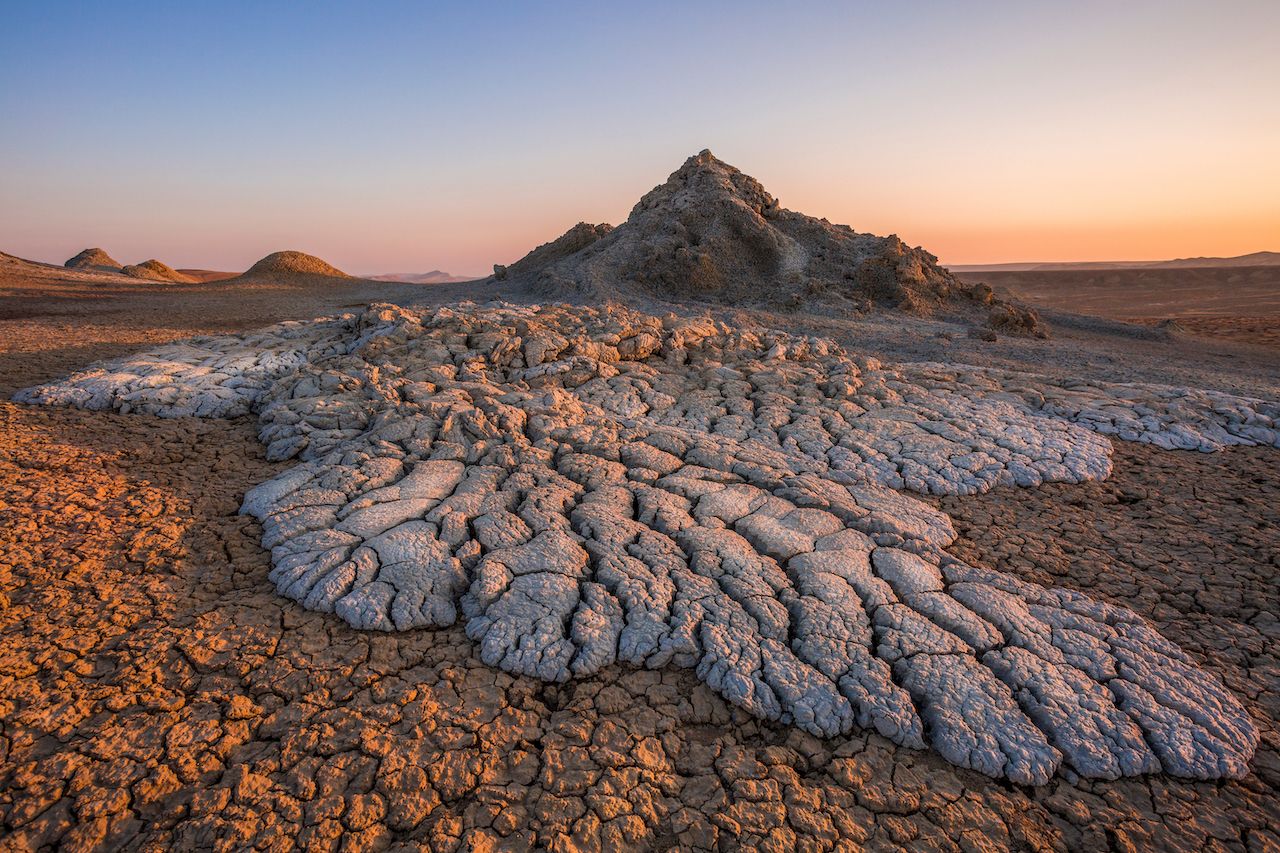
Photo: Denis Sv/Shutterstock
A mud volcano is exactly what it sounds like: a volcano-shaped mud buildup caused by geothermal pressure. It’s not a volcano in the lava/Dante’s Peak sense, but it’s still amazing cool (and pretty rare). Azerbaijan is home to between 350 and 400 mud volcanoes, more than any other country in the world (and half of the world’s total). They’re mostly in and around Gobustan (also spelled Quobustan) National Park, about an hour outside the capital city of Baku.
Uluru
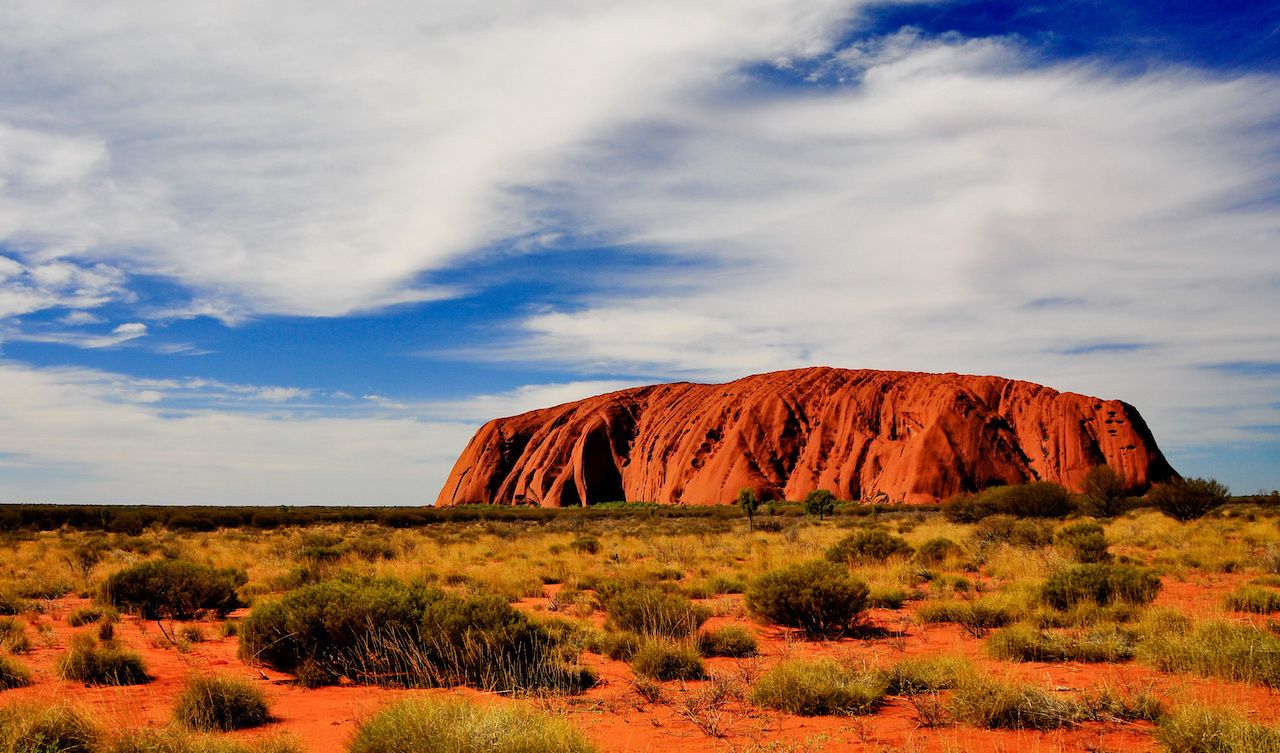
Photo: Stanislav Fosenbauer/Shutterstock
Australia’s Uluru (or Ayer’s Rock) ranks among the continent’s most recognizable natural wonders icons, rising up over the arid Red Centre near Alice Springs in the Northern Territory. The Anangu people, one of the oldest human societies in the world, are the traditional and current custodians of Uluru.
Vesuvius
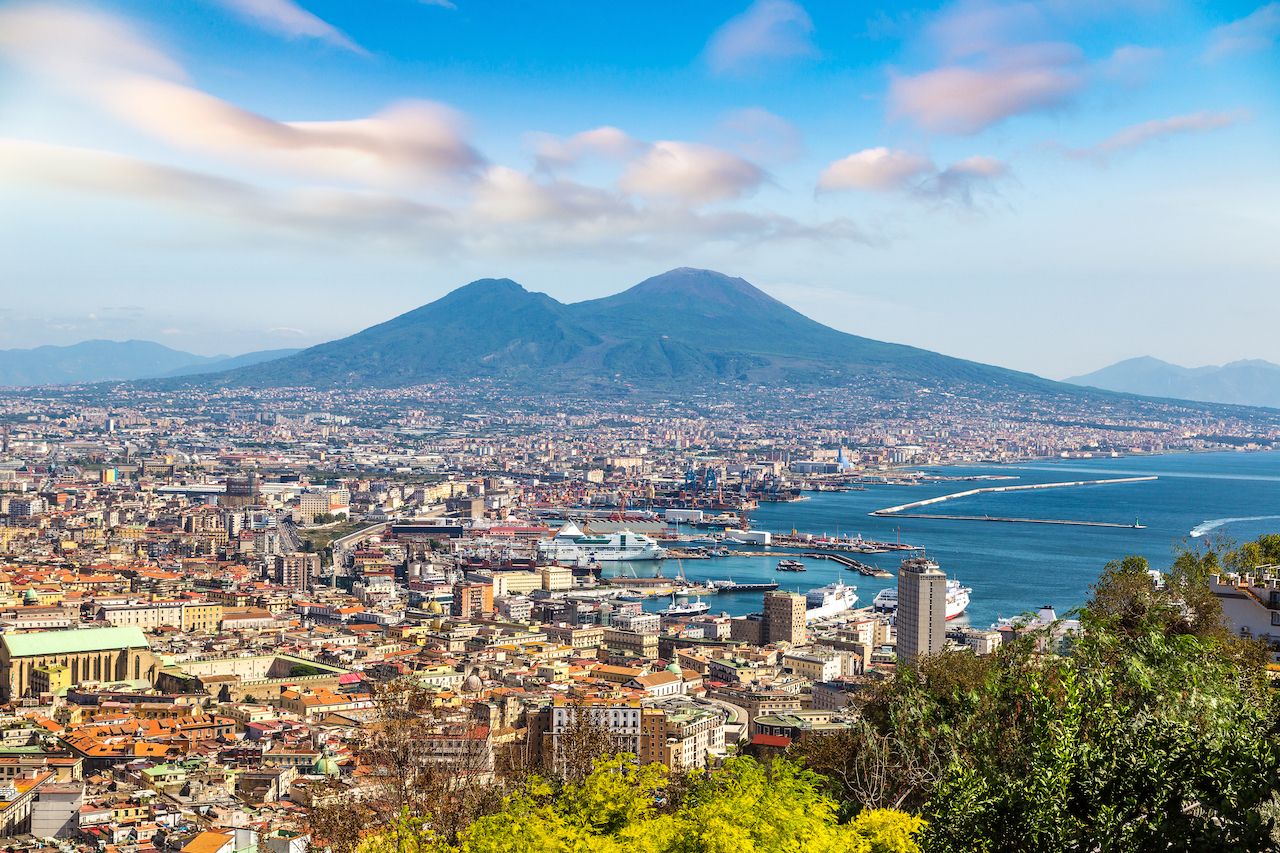
Photo: S-F/Shutterstock
As impressive as this Italian volcano near Naples is as a geographical landmark, Mount Vesuvius is most famous for its violent history, which includes the destruction of Pompeii and neighboring Herculaneum in 79 AD. If you’re in Rome, you can do a day trip to the site as well as the Antiquarium, where most of the relics and remains from the towns are on display. By the way, you can hike to the top and look into the crater, but keep in mind it’s an active volcano. So if you see headlines saying there have been a few ground tremors in the area recently, maybe re-think your hike.
Yushan
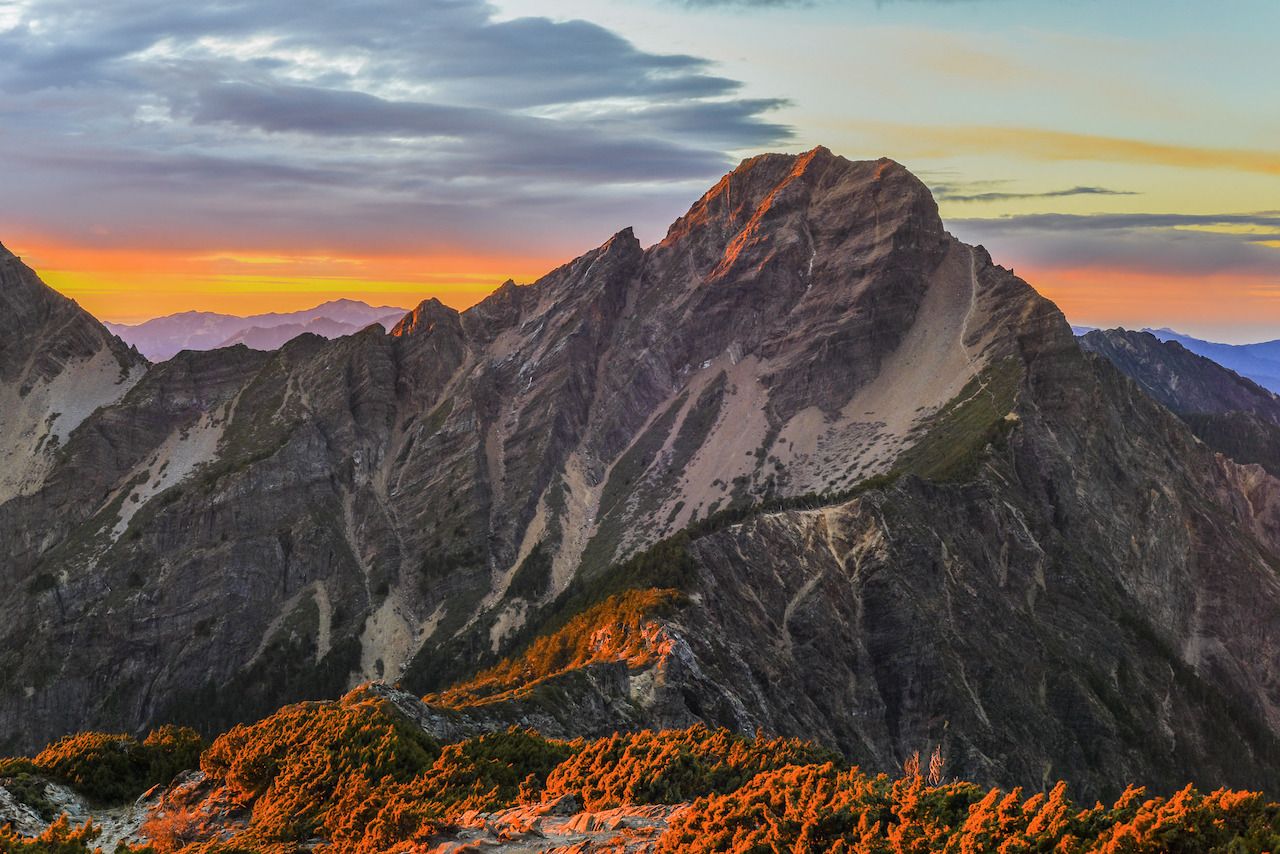
Photo: weniliou/Shutterstock
Yushan is Taiwan’s tallest mountain, sometimes referred to as Jade Mountain. It’s surrounded by a national park of the same name where hikers will find several scenic routes to explore. The trek to the summit is rather arduous at 15 miles and a 6,110-foot gain, and you’ll need to make a reservation to stay at Paiyun Lodge — the only option for sleeping along the route — at least four months in advance. If you don’t plan to hike to the summit, you can get great views of Yushan from almost anywhere within the eponymous Yushan National Park.
Yellowstone National Park
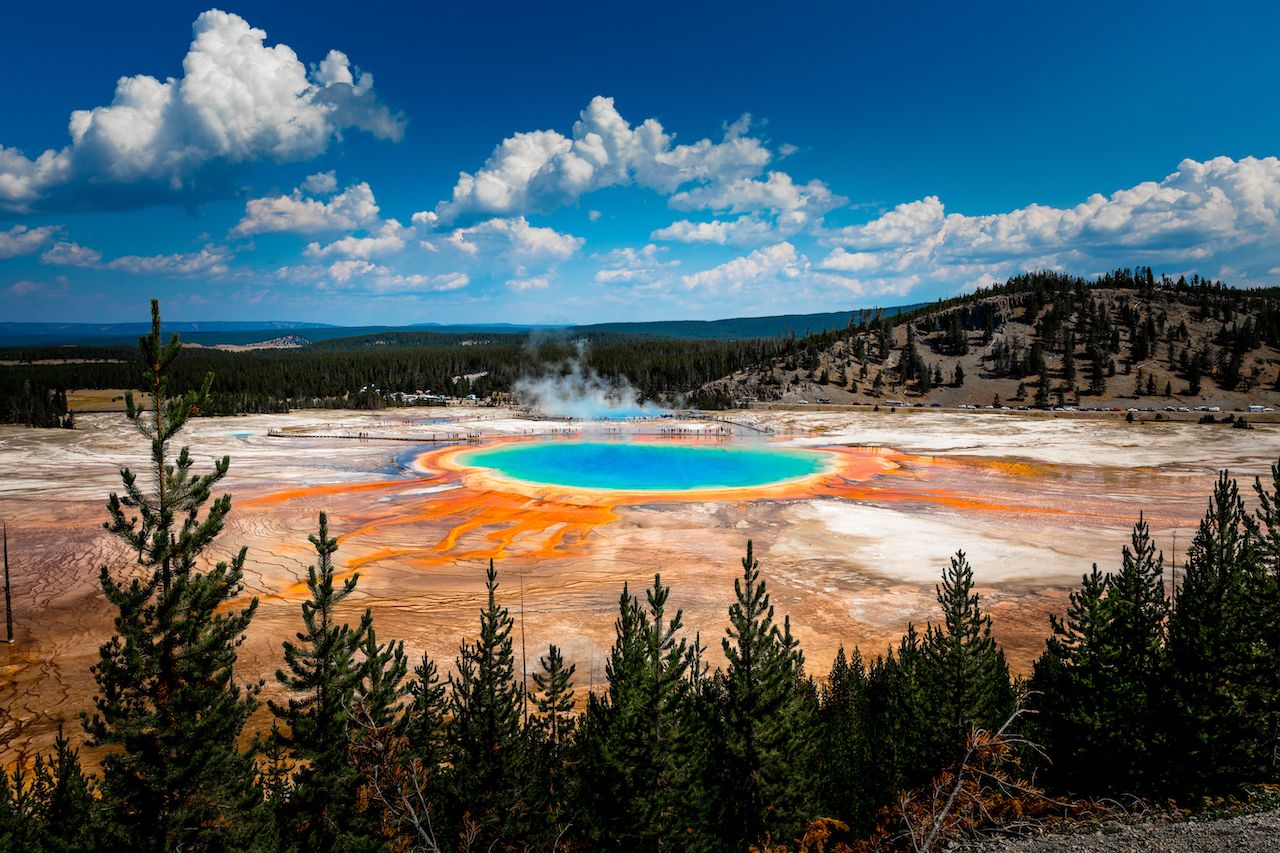
Photo: Anders Riishede/Shutterstock
It shouldn’t come as a surprise to see Yellowstone National Park — America’s first national park — on this list. The Yellowstone Caldera supervolcano and surrounding Yellowstone National Park represent one of the most striking landscapes in the world. Pictured above is the Grand Prismatic Spring, one of more than 500 geysers (and roughly 10,000 various geothermal features).
The Sahara Desert
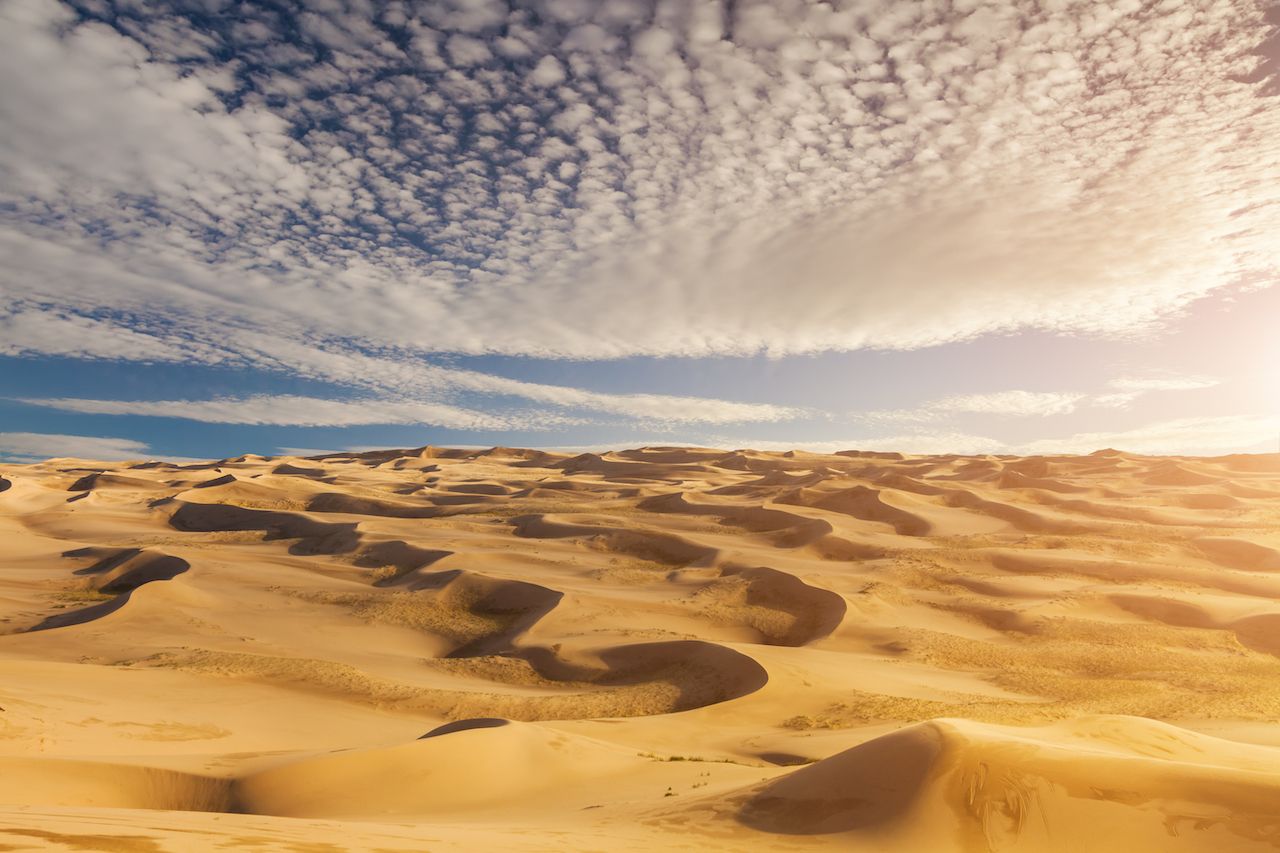
Photo: Anton Petrus/Shutterstock
The Sahara is the world’s hottest desert, having been known to reach temperatures of 120 degrees Fahrenheit during the summer, and it’s the largest desert outside the polar regions. It spans most of northern Africa, stretching across 10 countries and the disputed territory of Western Sahara. One of the easiest ways to walk through the Sahara is to book a multi-day trip from Fes or Marrakech in Morocco, which usually includes other stops along the way as it’s roughly a nine-hour drive to Merzouga, the gateway town for the Sahara.
Salar de Uyuni
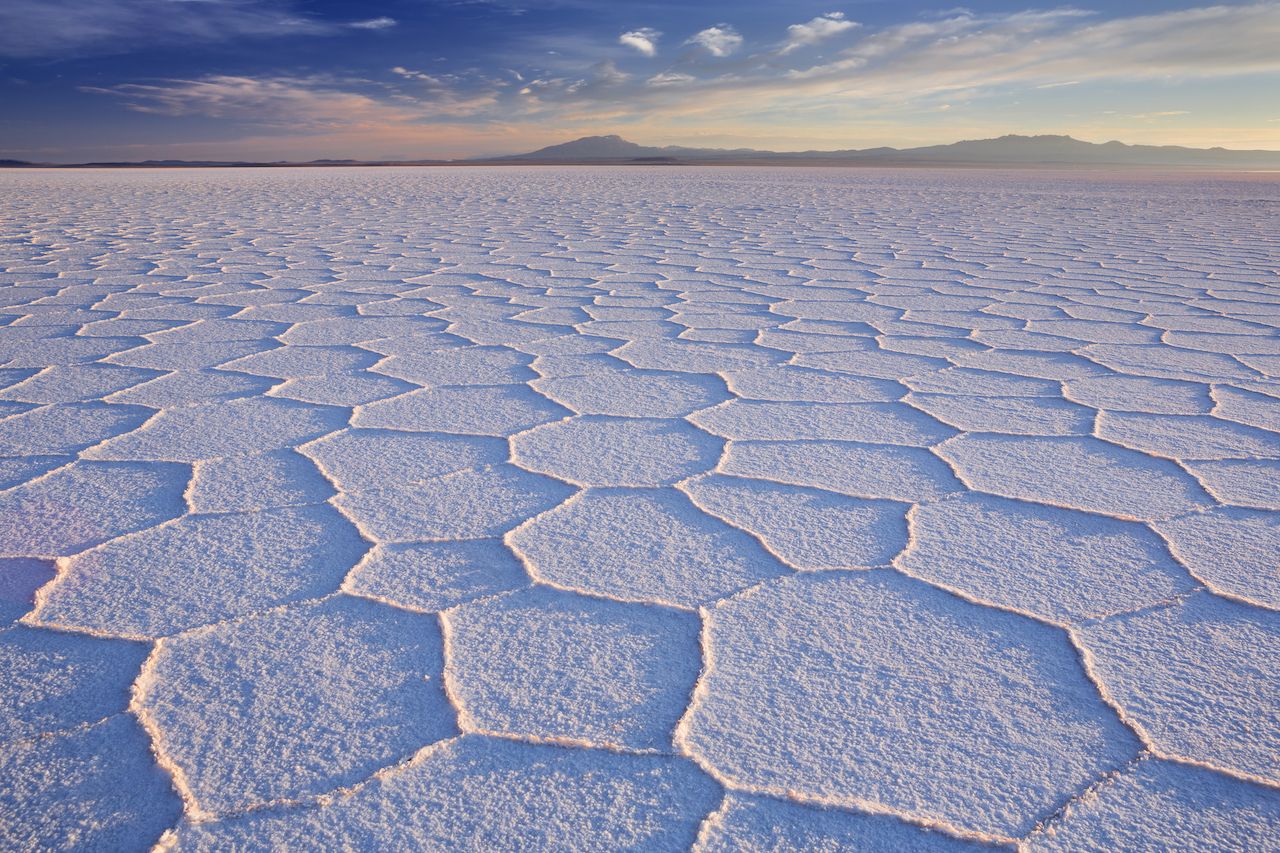
Photo: Sara Winter/Shutterstock
Bolivia’s salt flat is the world’s largest. During the rainy season, water collects on the ground creating a mirror-like effect, giving photographers something extra surreal to capture. As with many ancient natural wonders, there’s a legend behind it: there was a love triangle between three mountains in the area, and the one was was eventually left out cried so many salty tears that it created this lake.
Pando

Photo: Kreig Rasmussen/Shutterstock
Pando is a tree colony spread across more than 100 acres in Utah that’s actually a single organism, the largest in the world. It weighs around 13 million pounds and is also one of the oldest organisms on the planet. Unfortunately, the extensive quaking aspen grove is dying due to grazing wildlife and human encroachment.
Giant’s Causeway
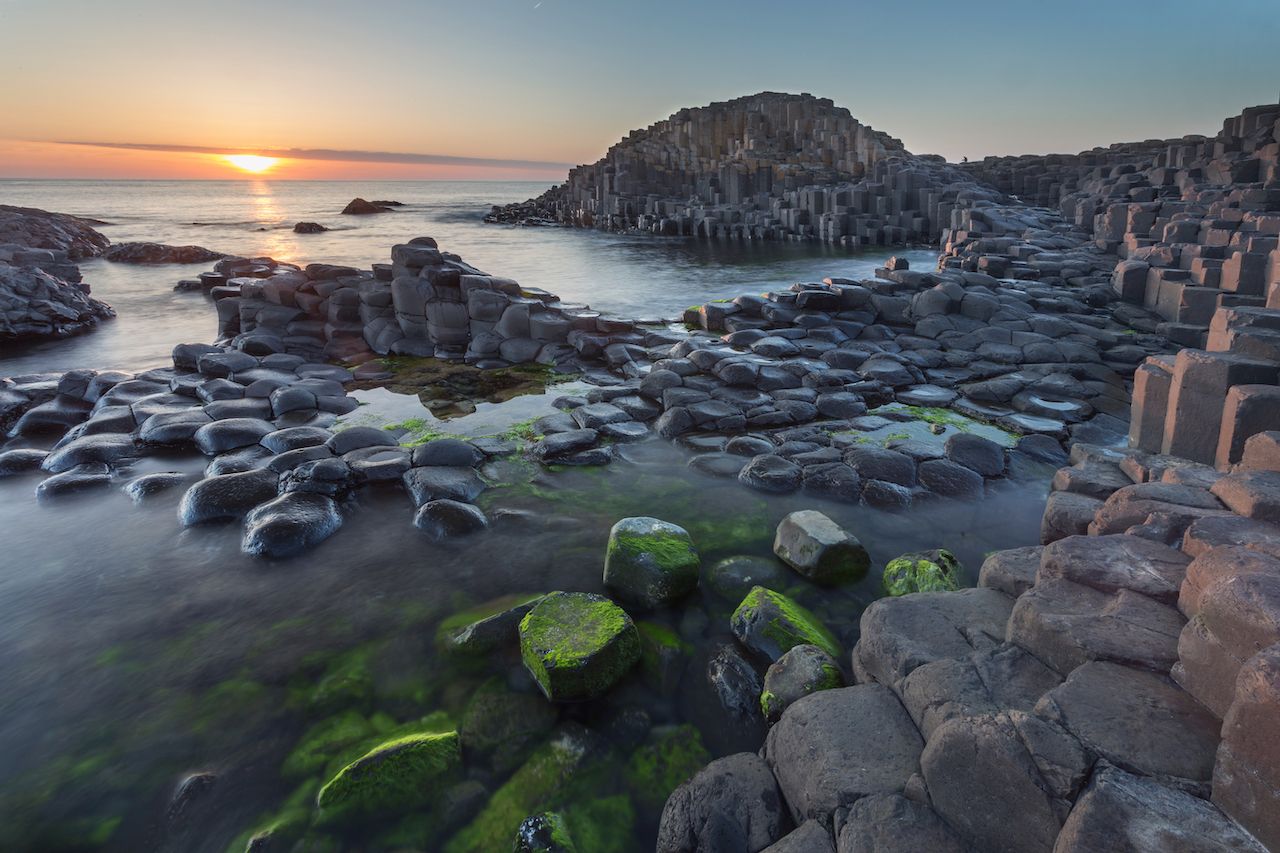
Photo: Kanuman/Shutterstock
Giant’s Causeway is a group of some 40,000 basalt columns in Northern Ireland that’s believed to be about 50-60 million years old. It’s a World Heritage Site and free to visit since most of the land is own by the country’s National Trust, which is akin to a parks service (the rest is privately owned). However, there is a low fee to see the visitor’s center’s displays, take a guided tour, or park on-site. Those tickets cost about $15 USD and should be purchased in advance if possible.
Zhangjiajie
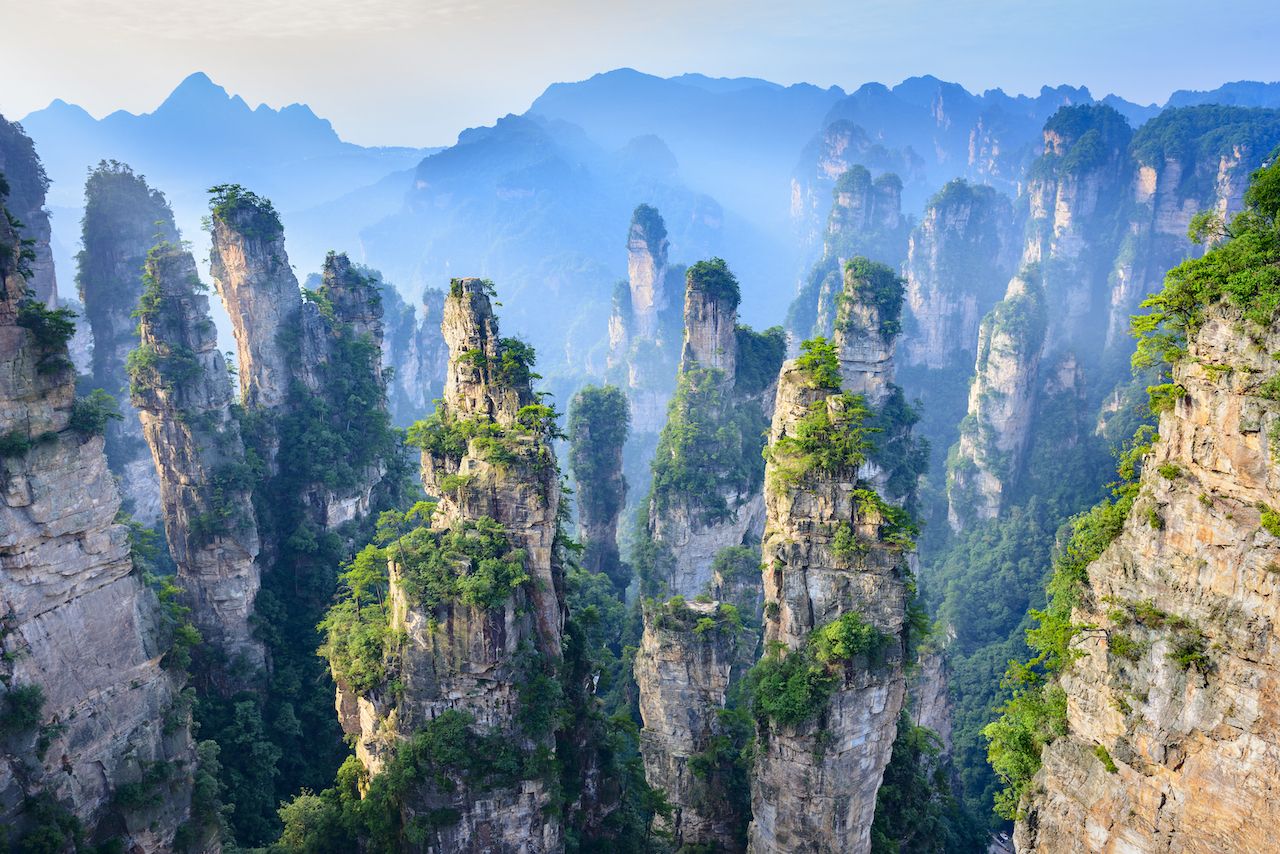
Photo: aphotostory/Shutterstock
The stunning sandstone pillars of Wulingyuan Scenic and Historic Interest Area’s Zhangjiajie looks like it belongs on Avatar’s Pandora rather than Earth. Luckily, visitors only have to travel as far as China’s Hunan Province to see this spectacular natural wonder for themselves. ![]()
This article about natural wonders was first published in 2014, updated in 2019, and again in 2022.
Source: matadornetwork








